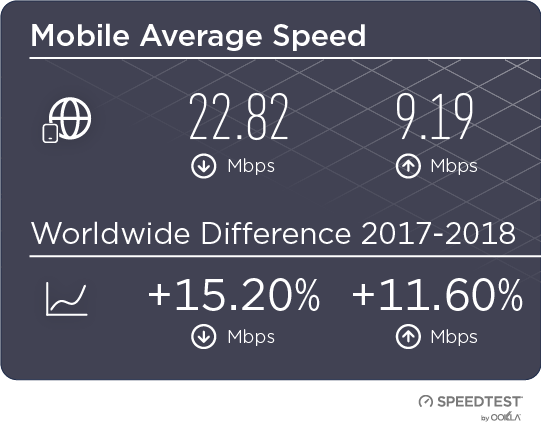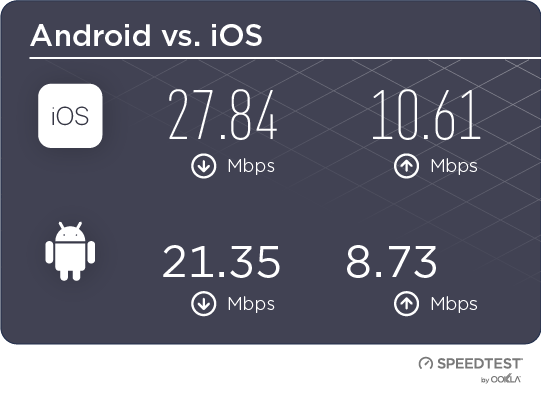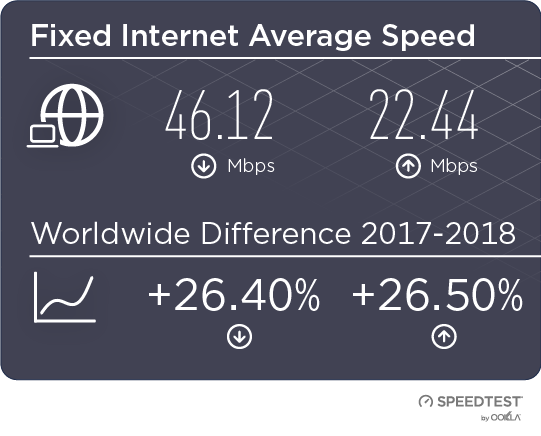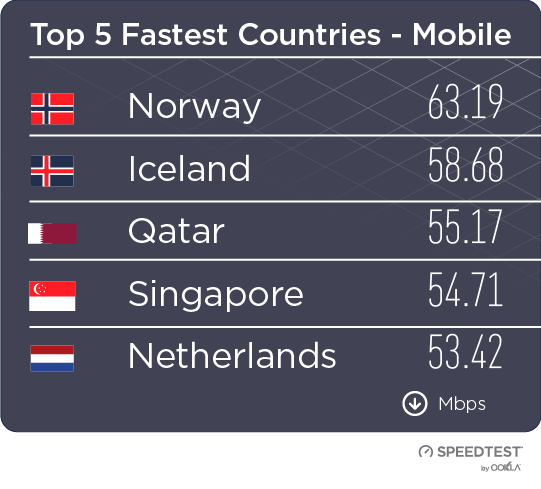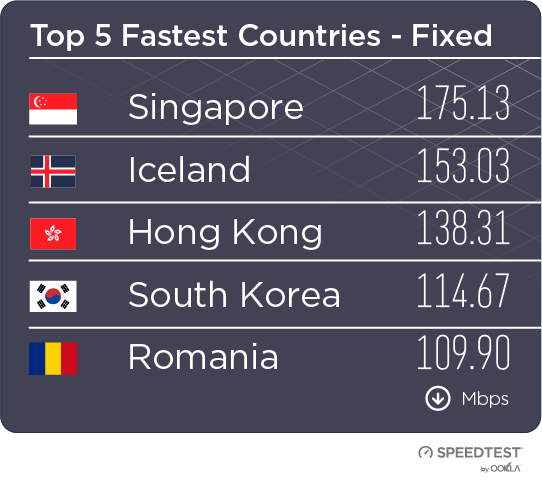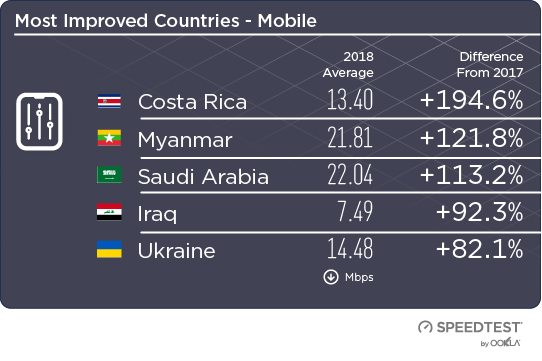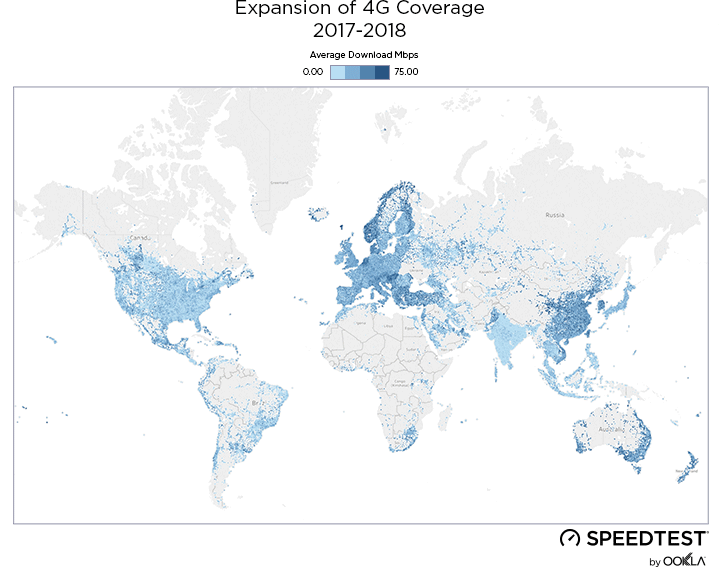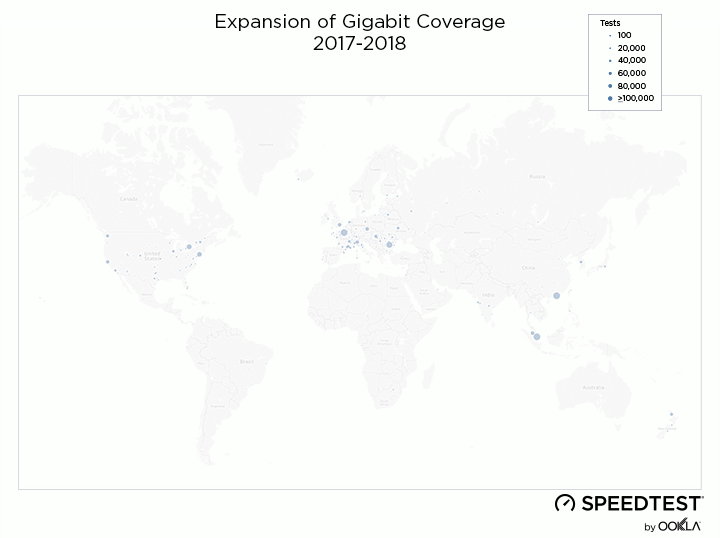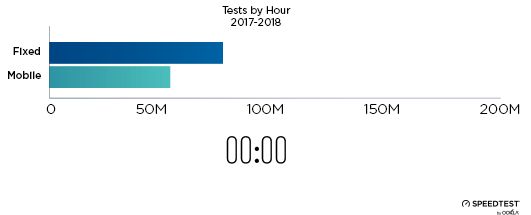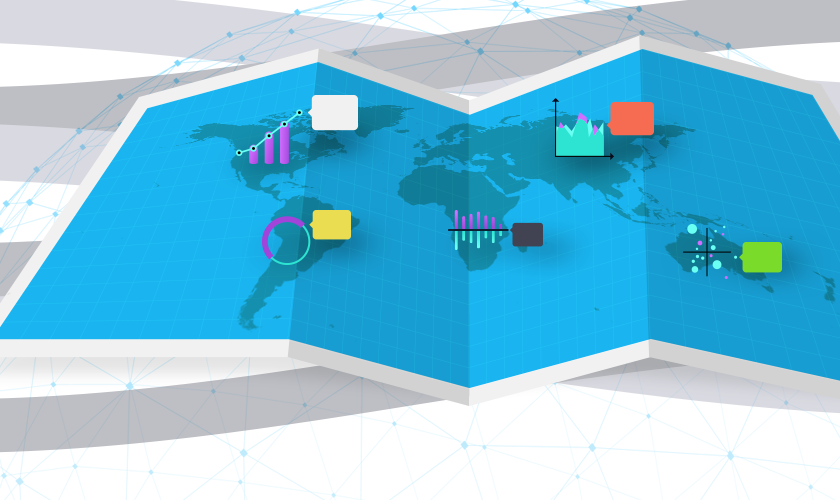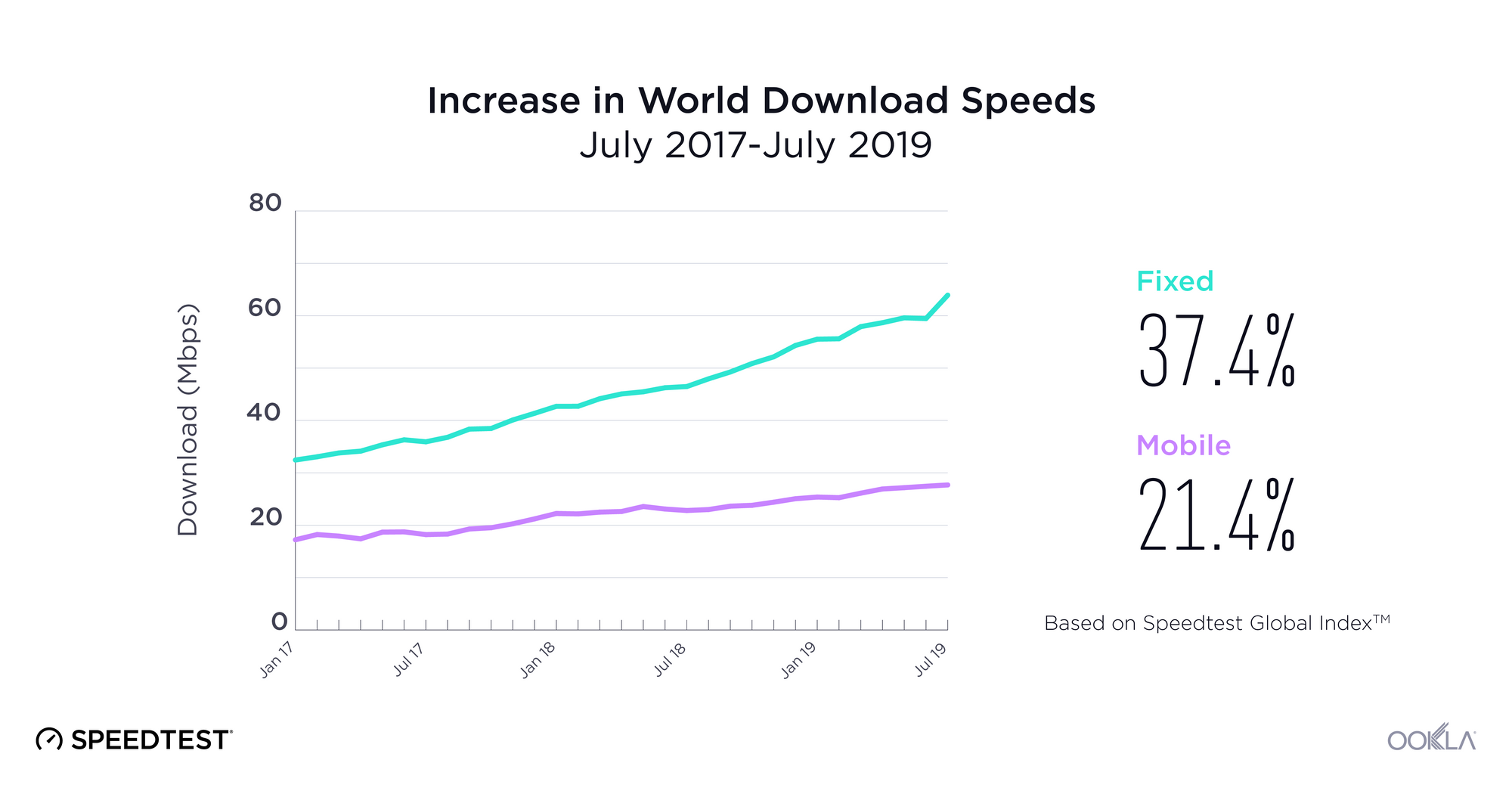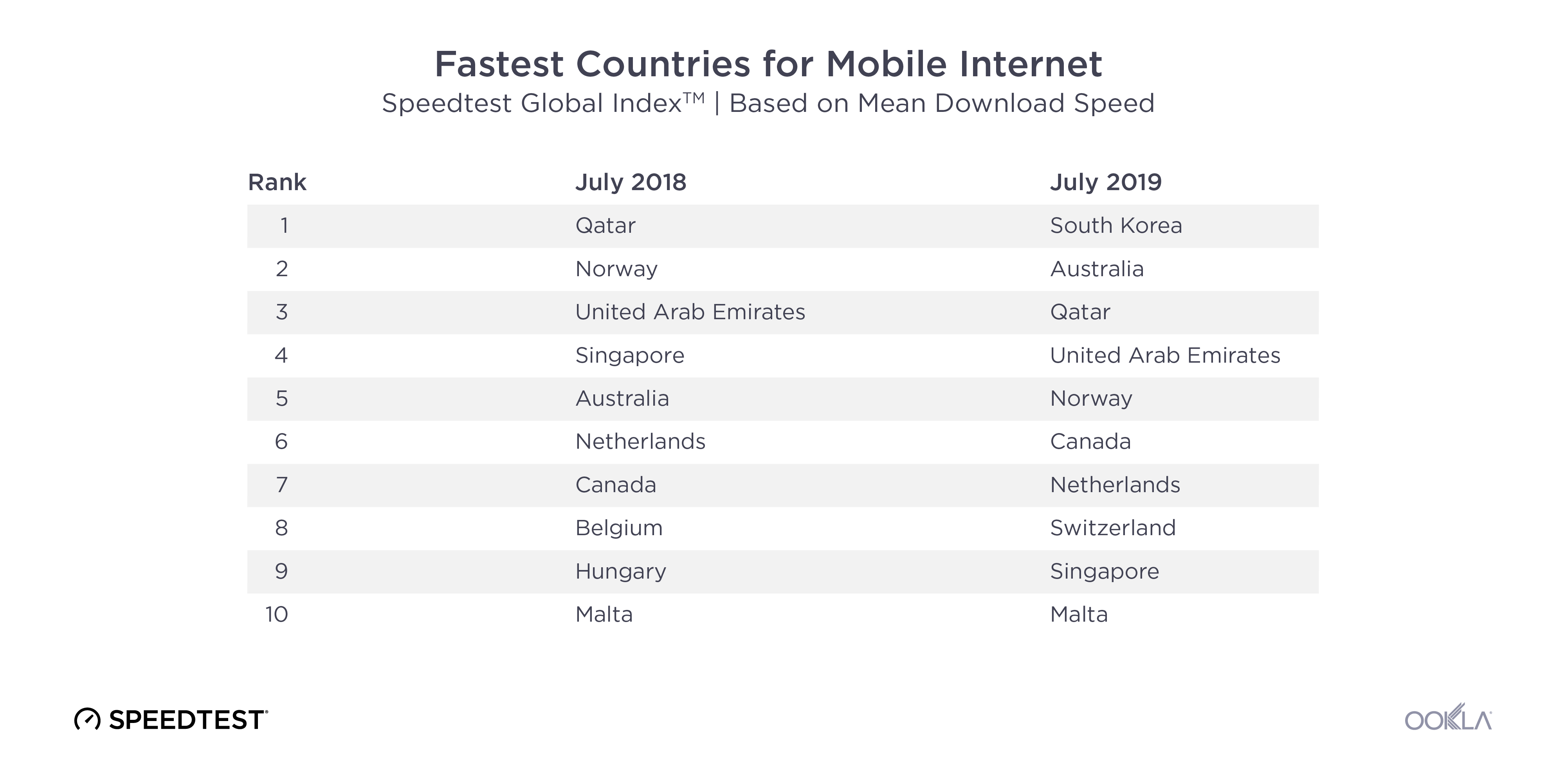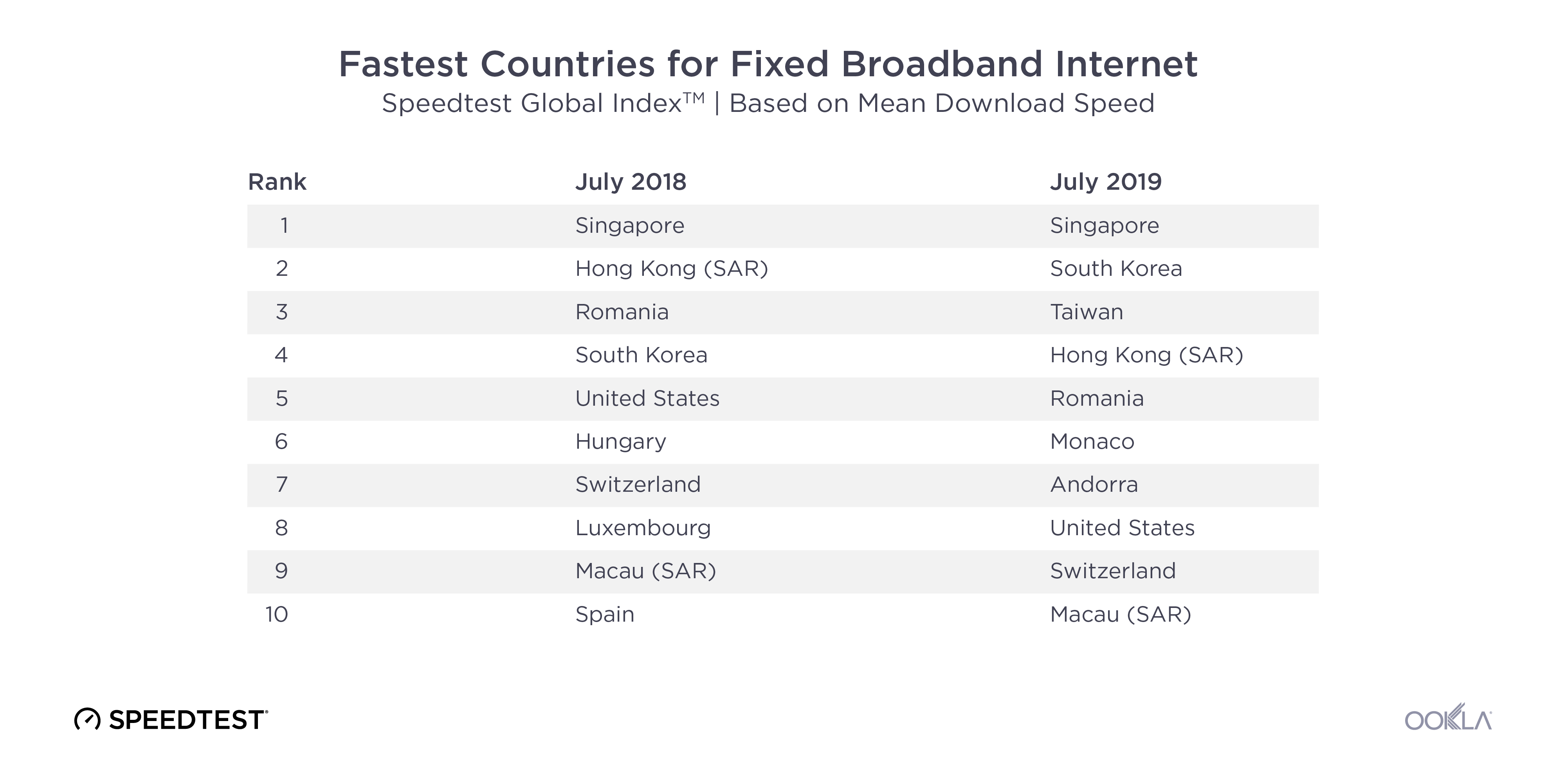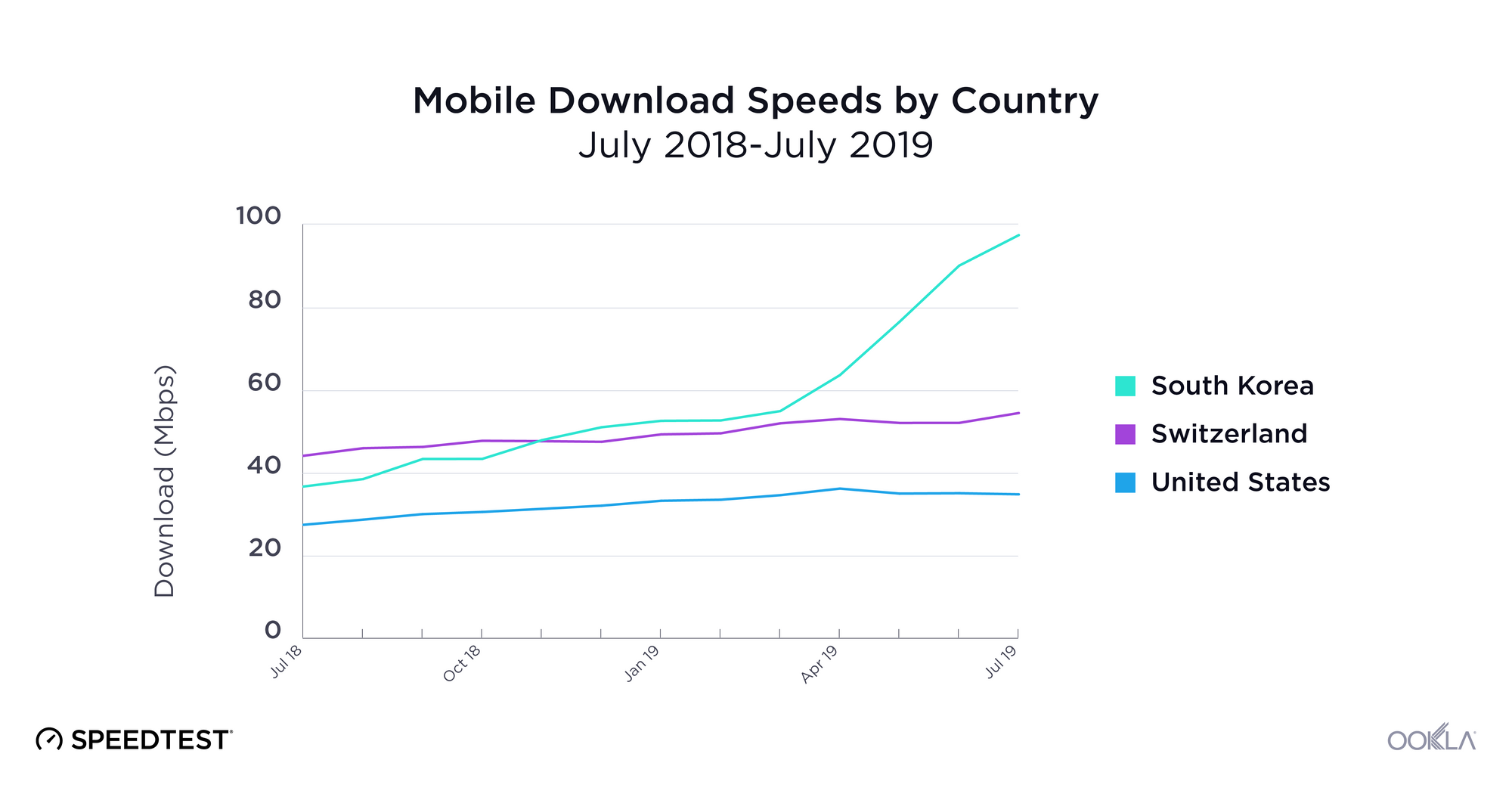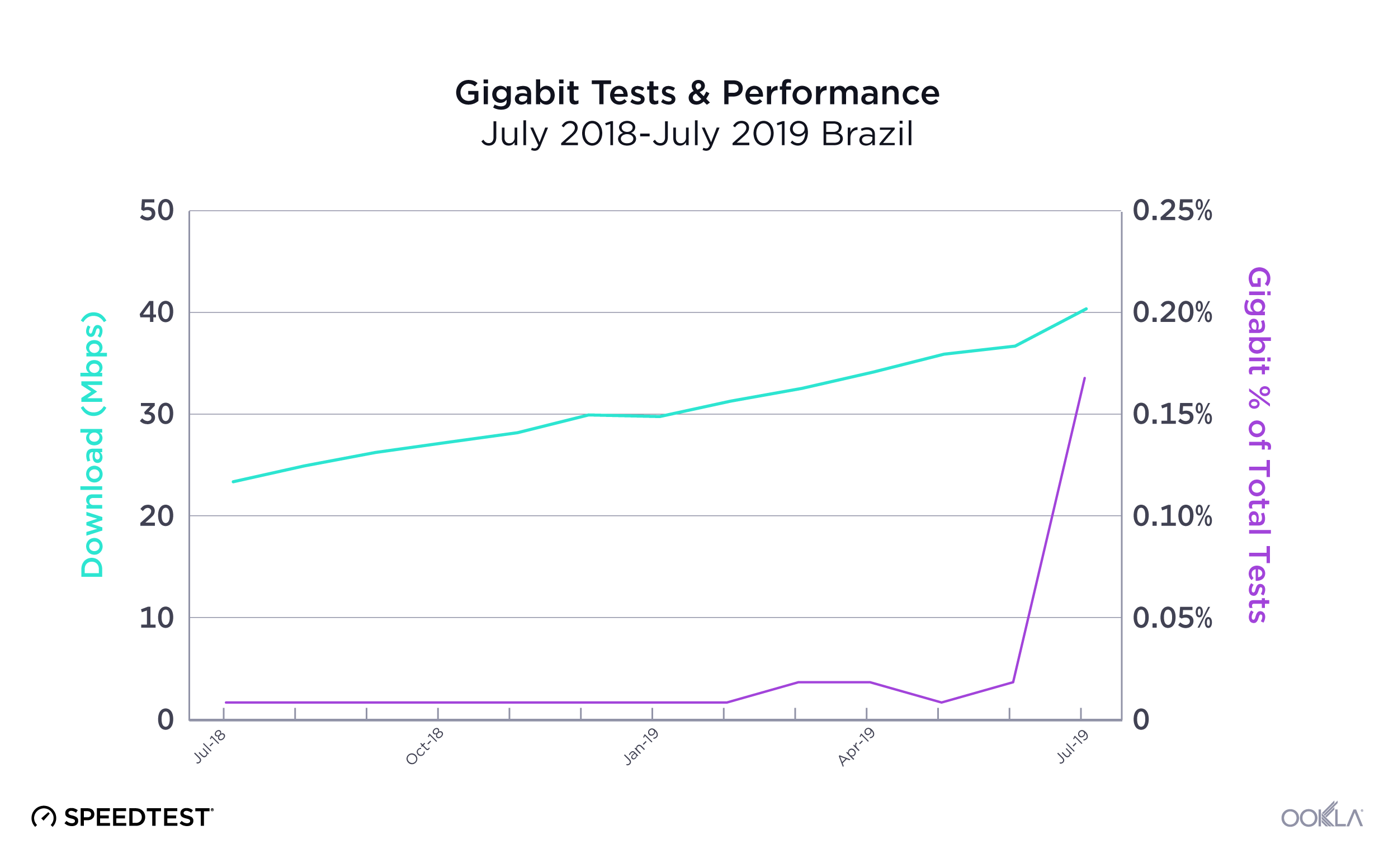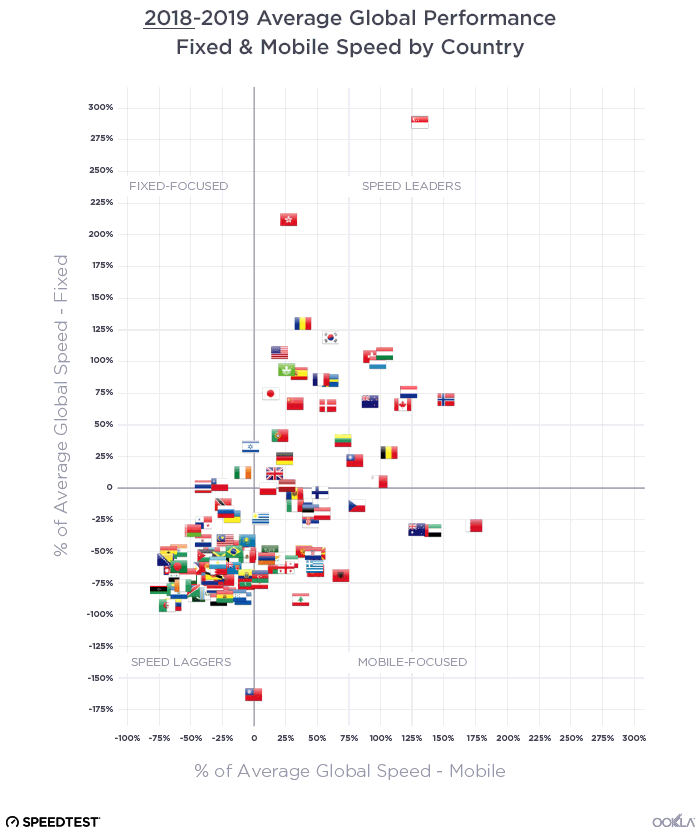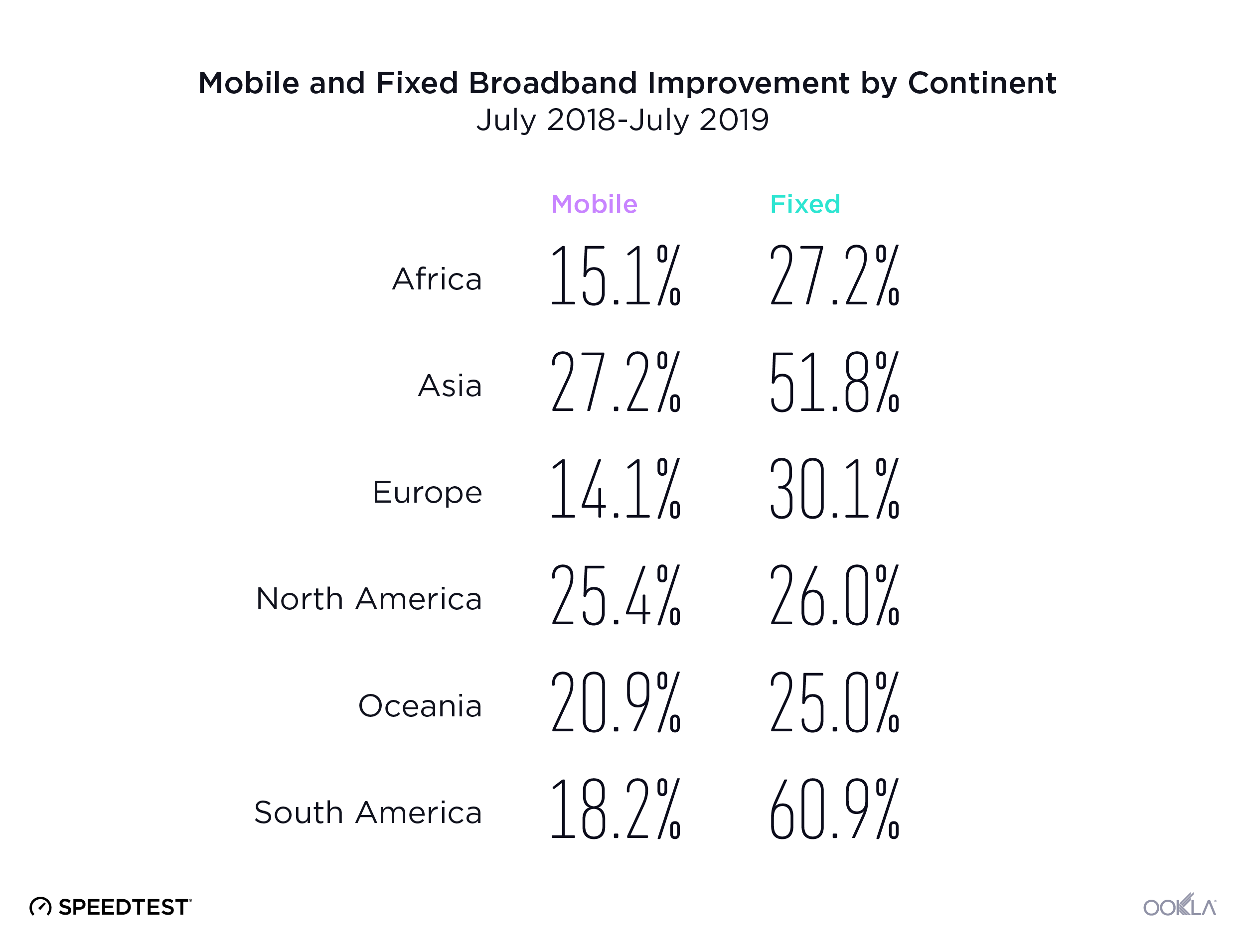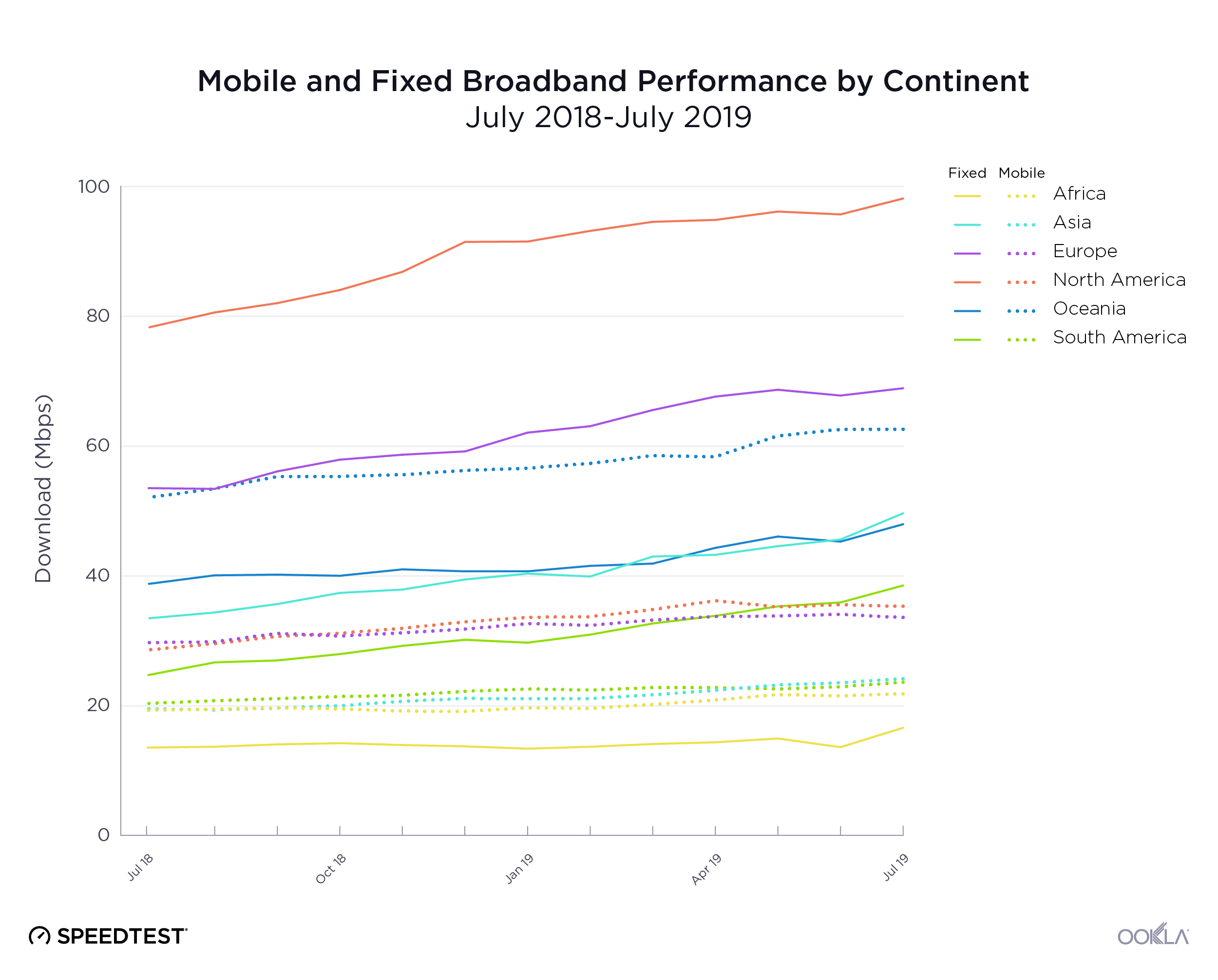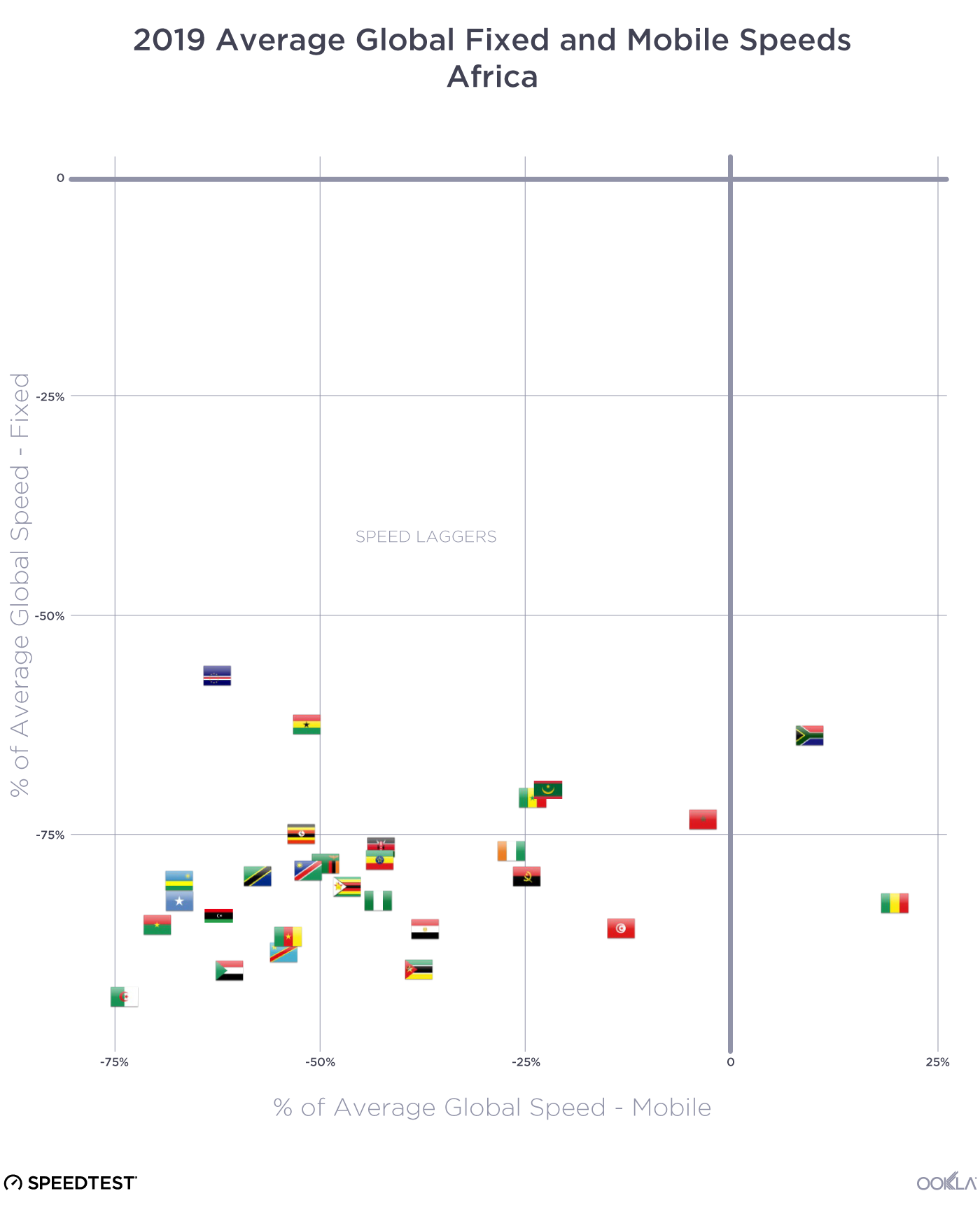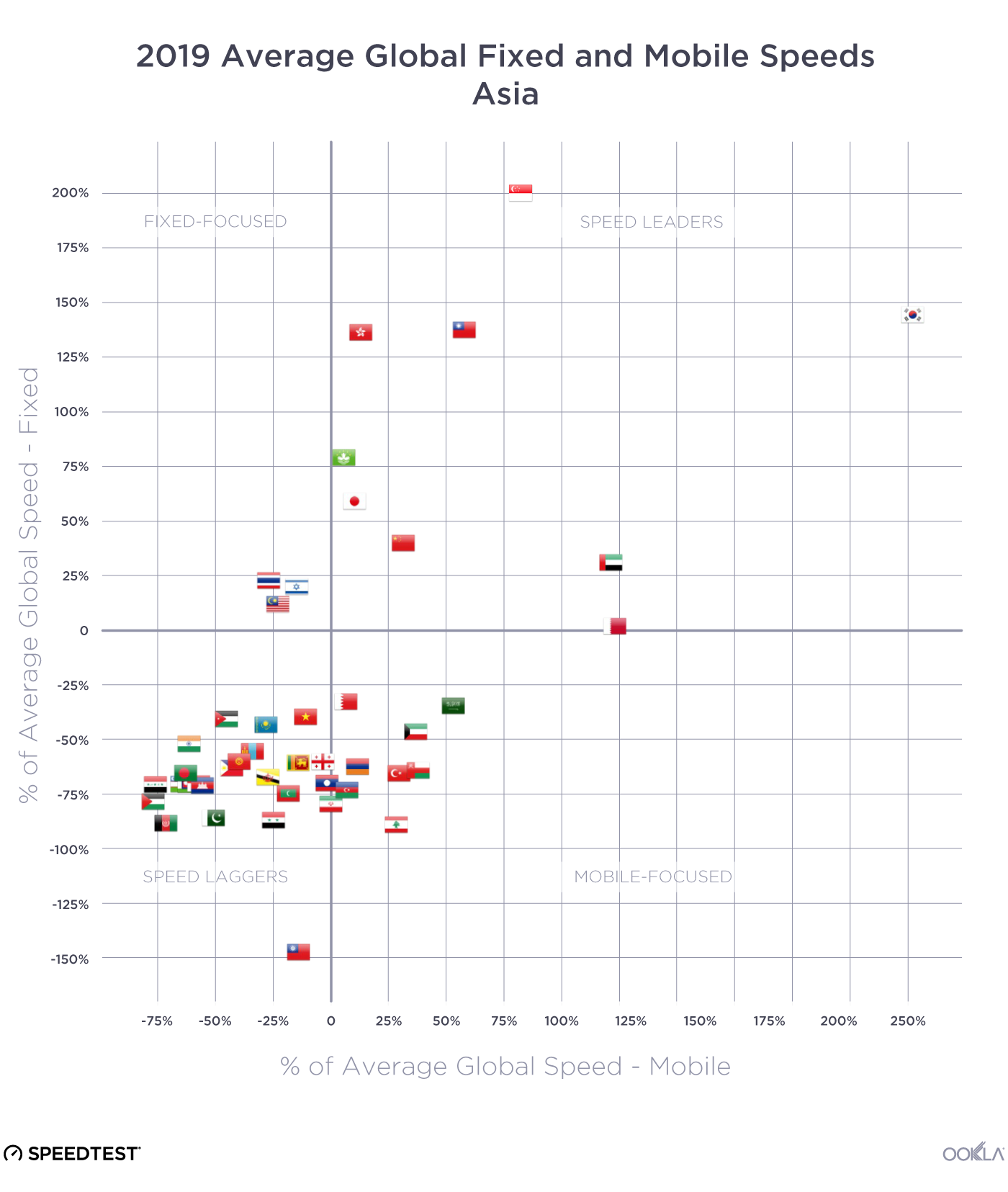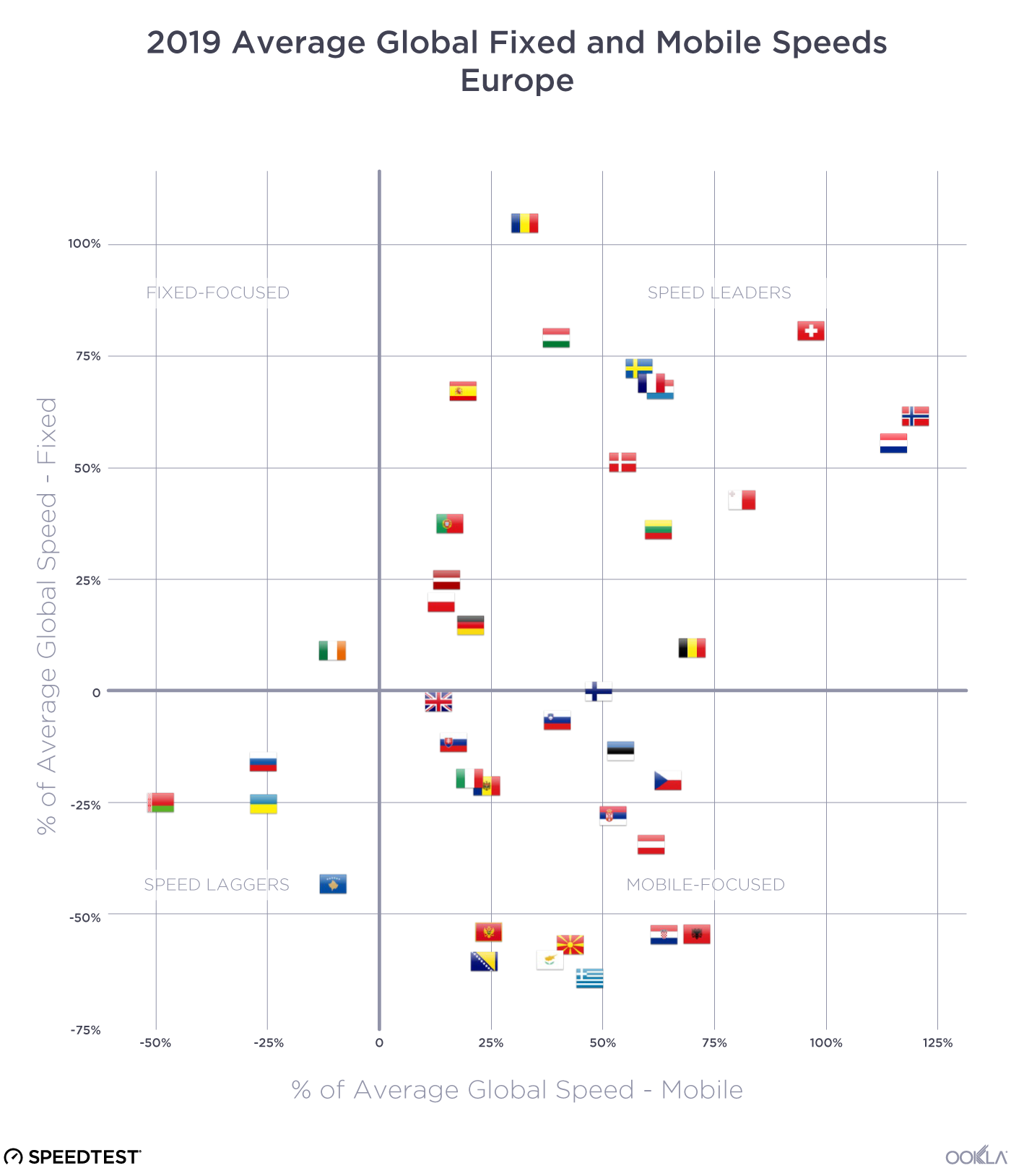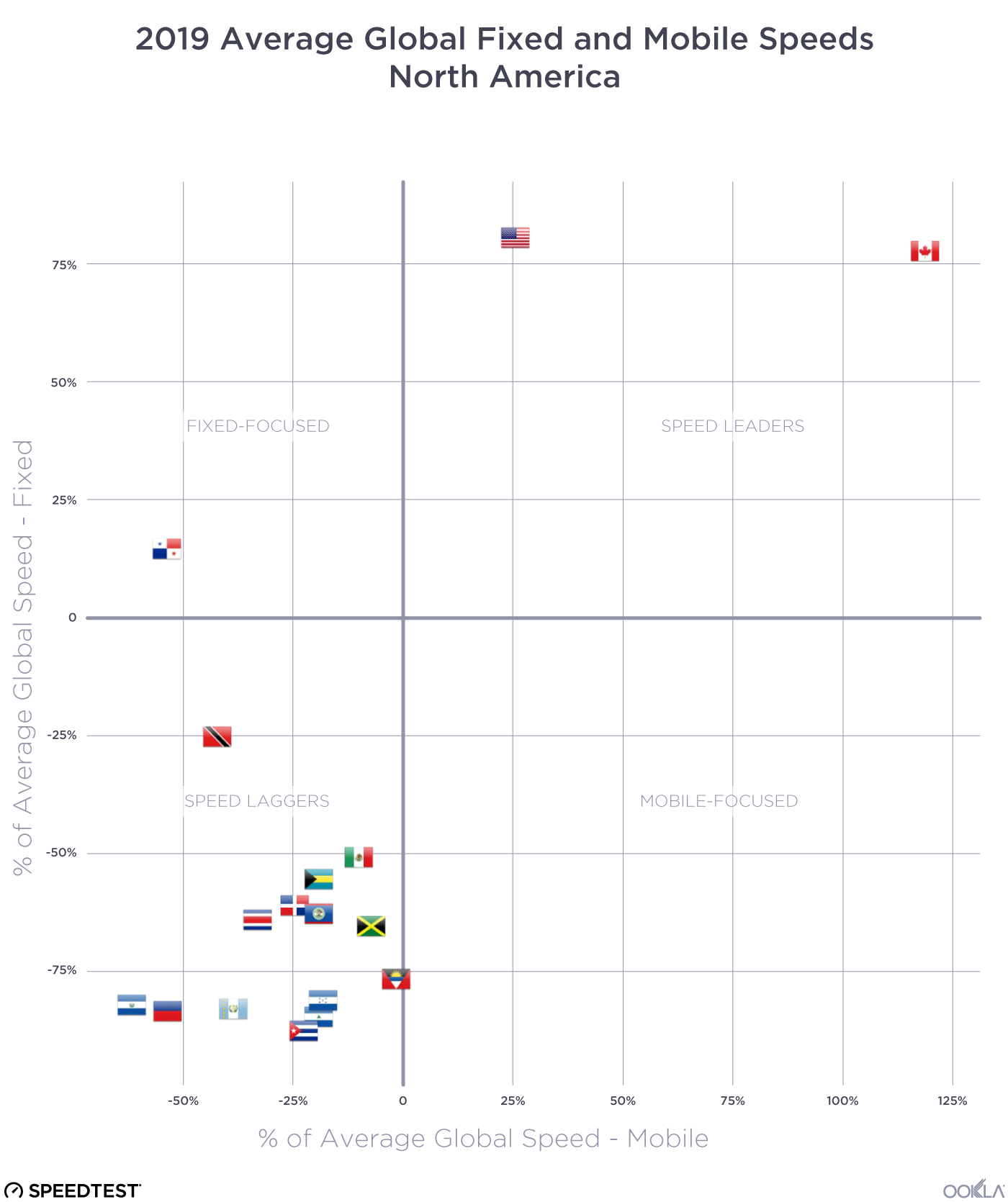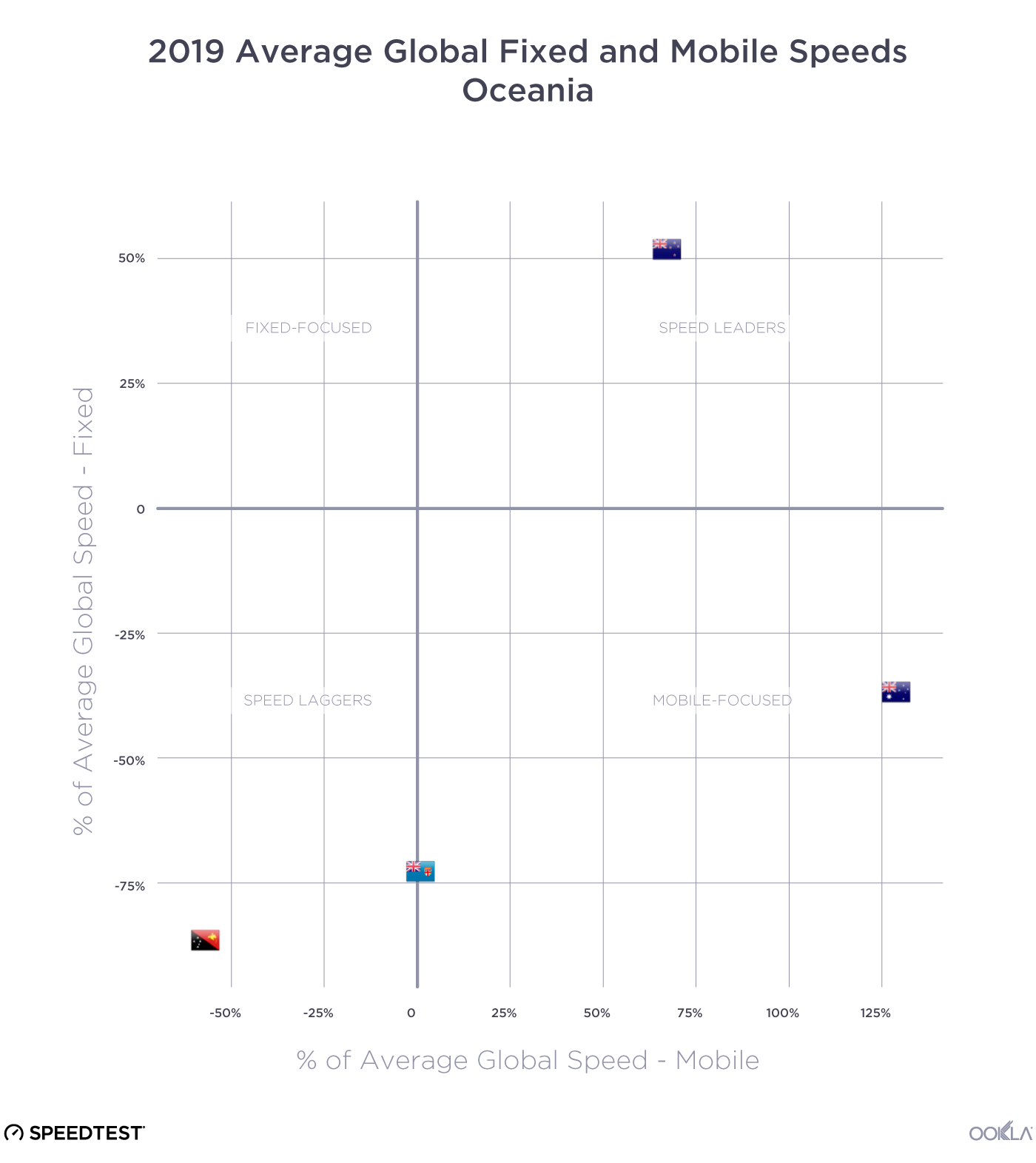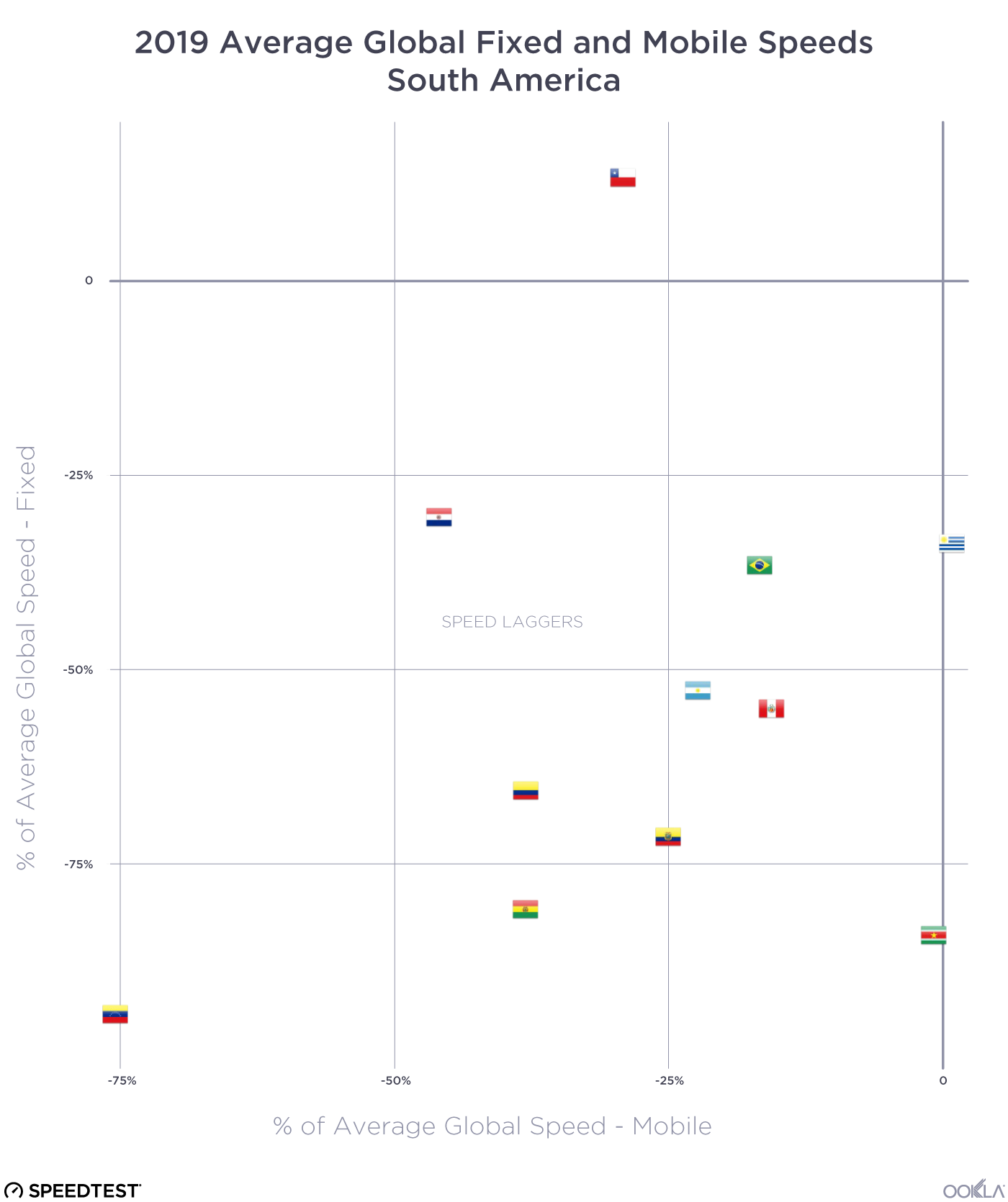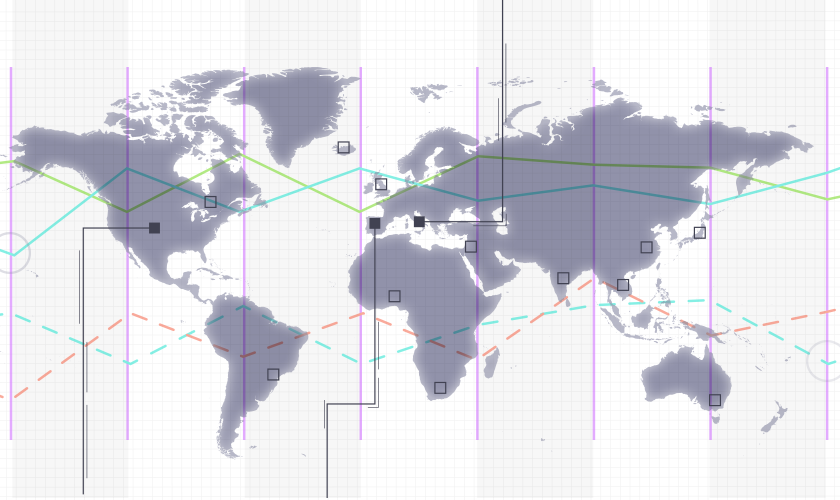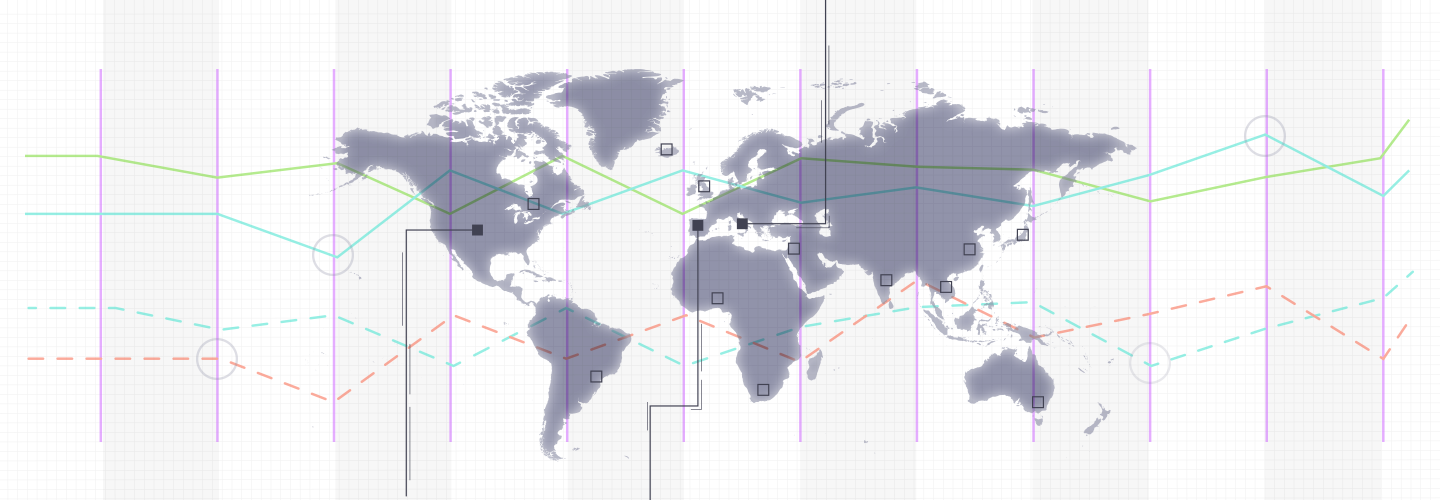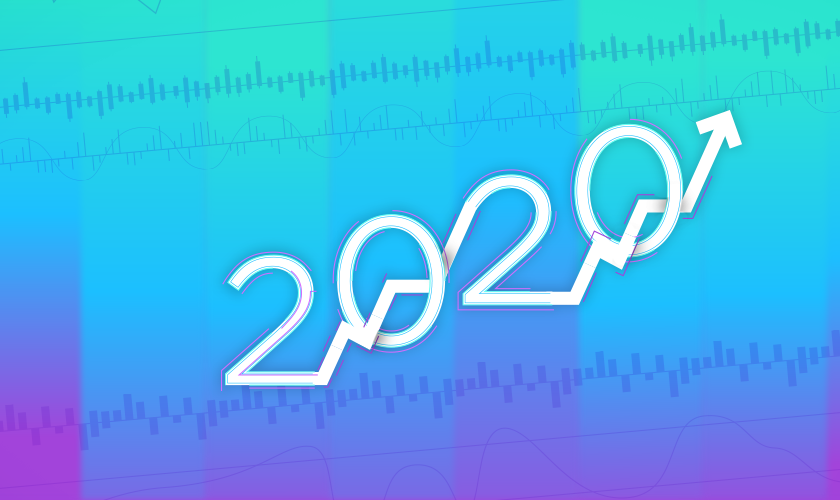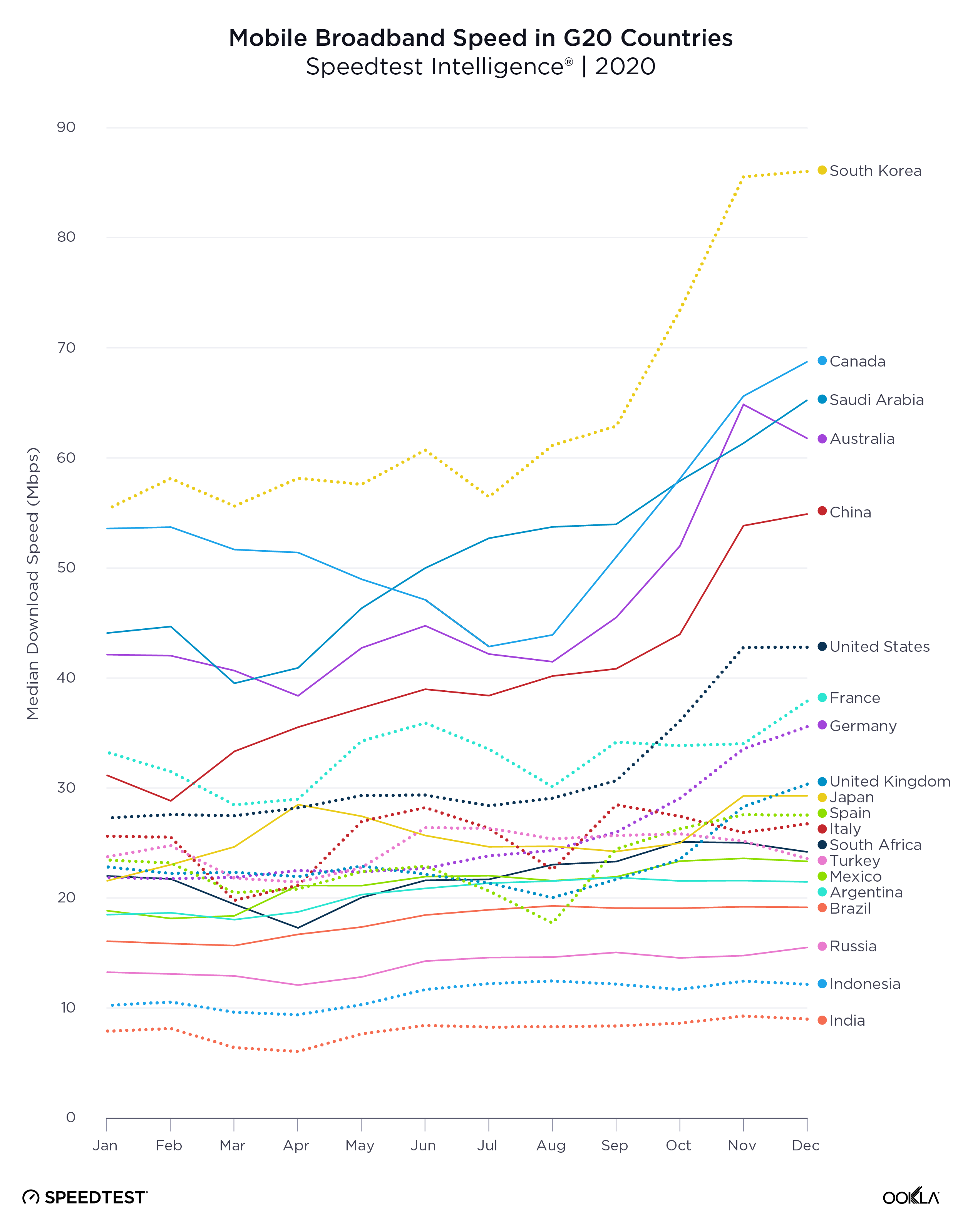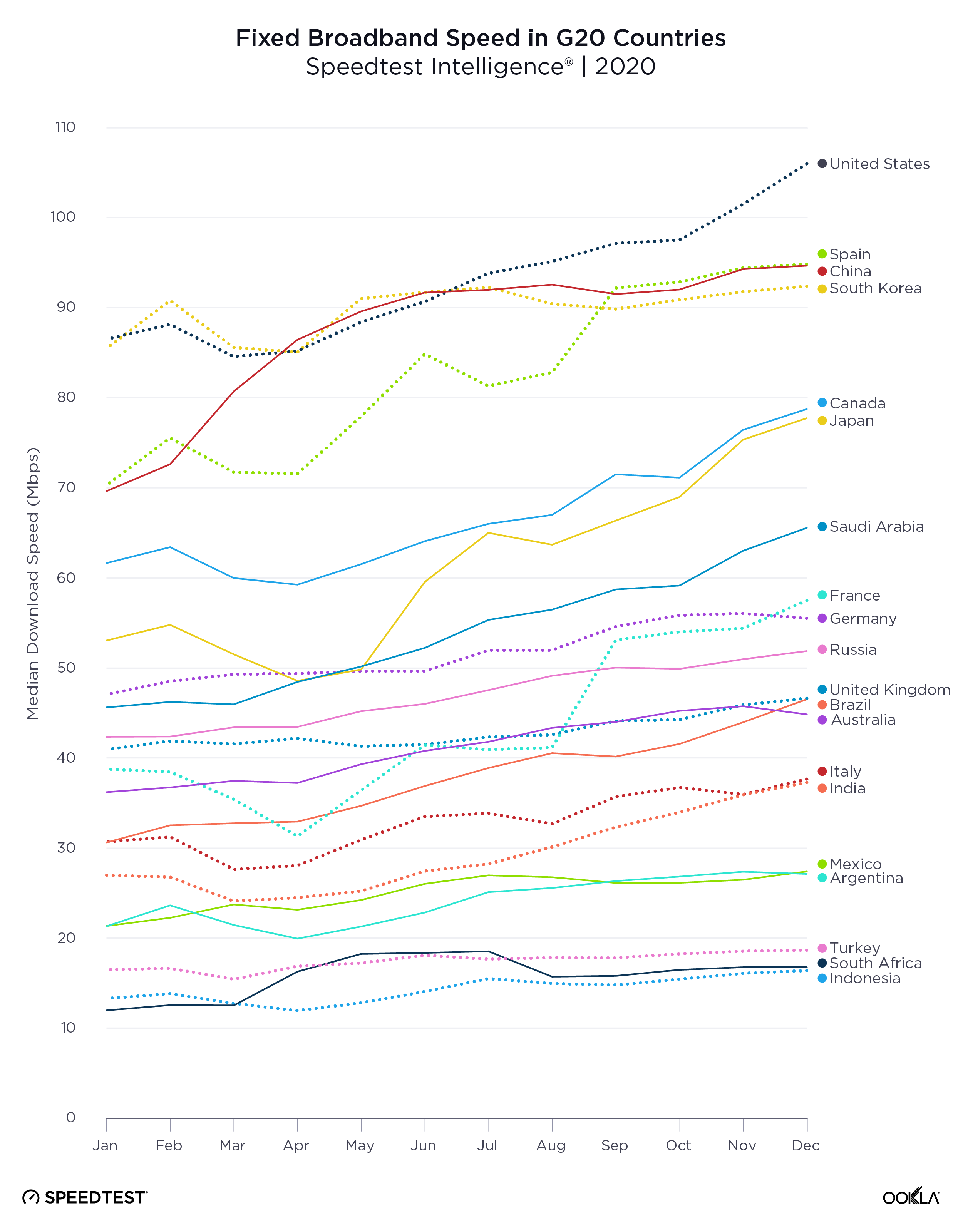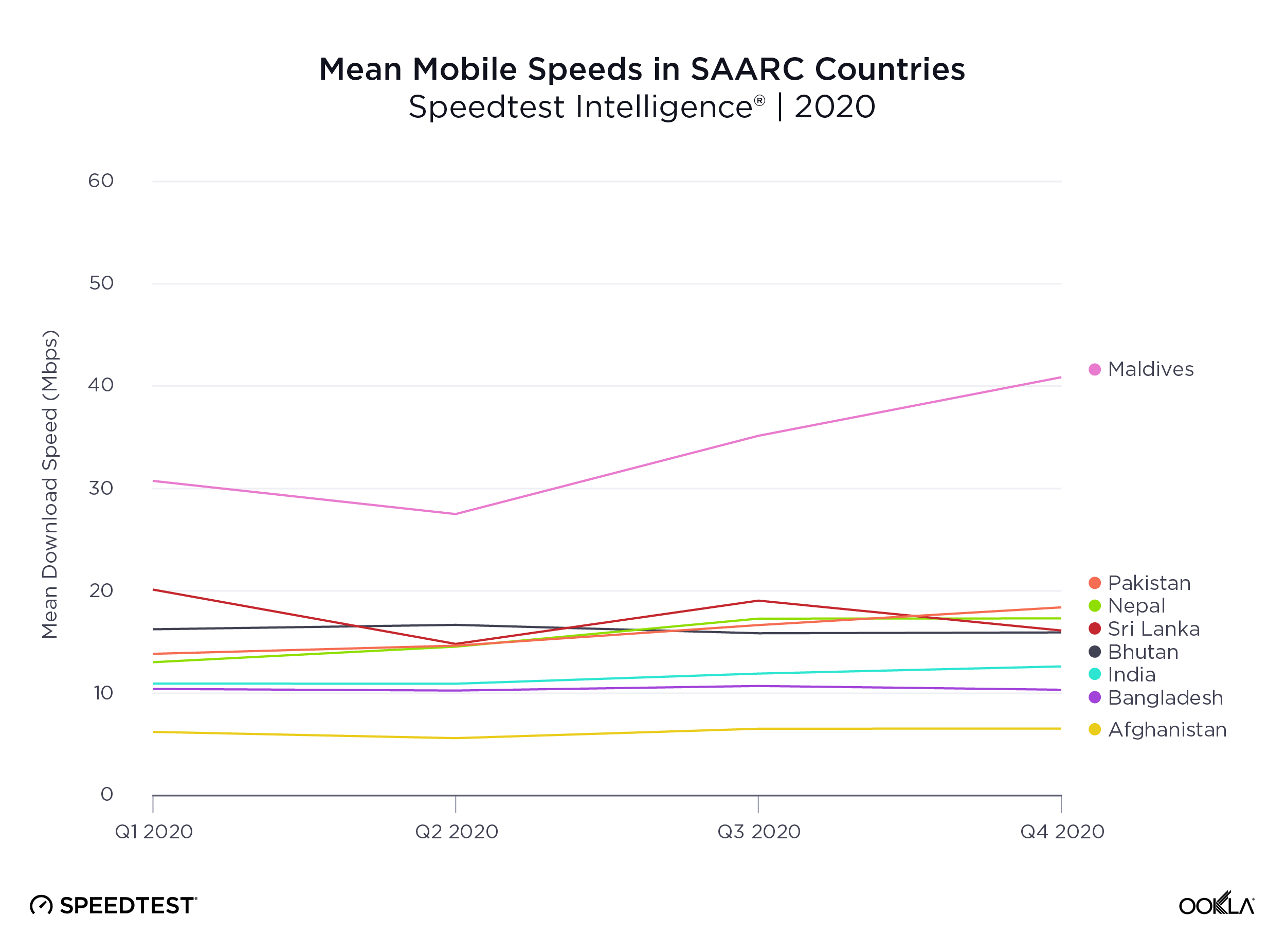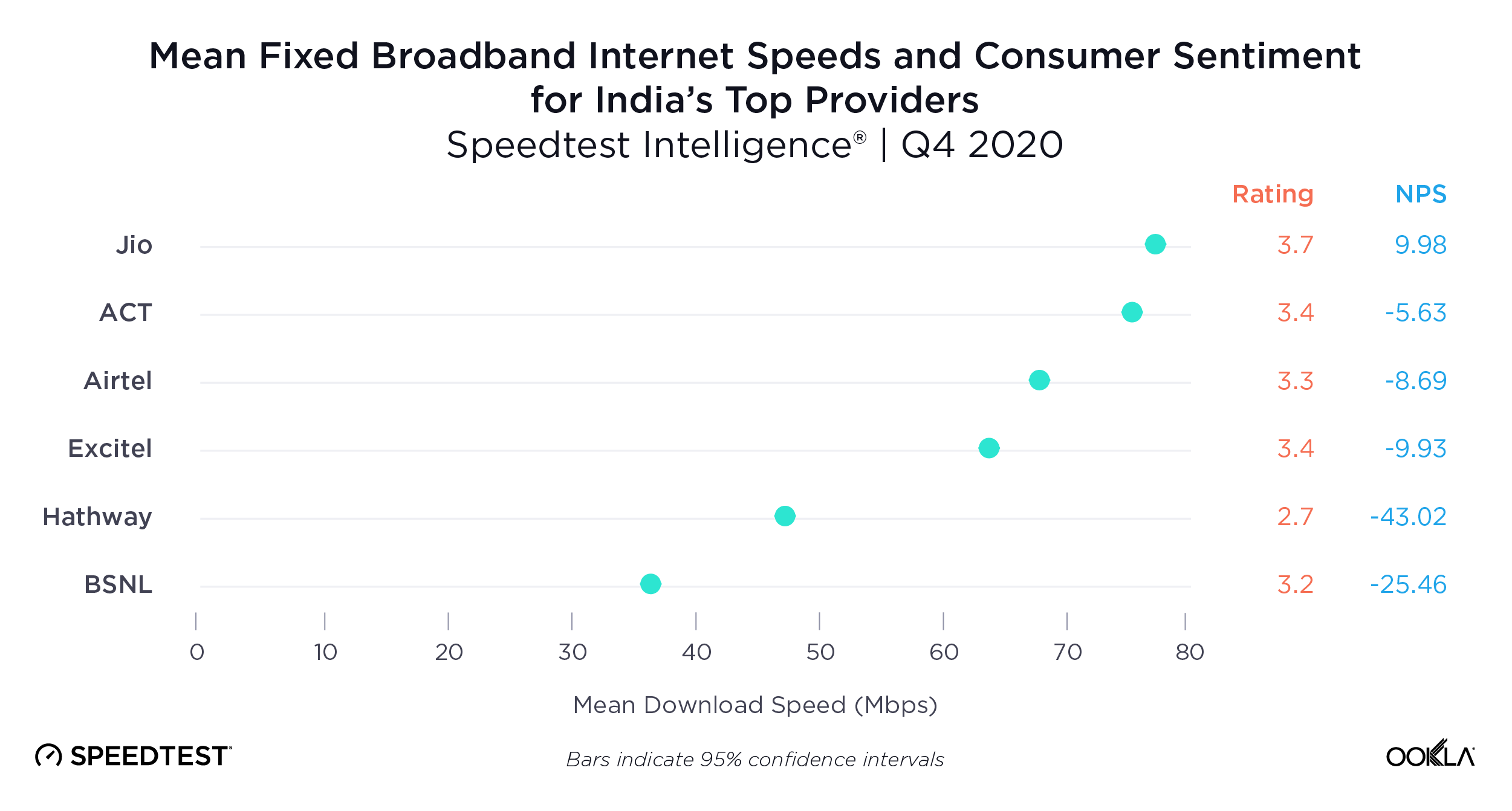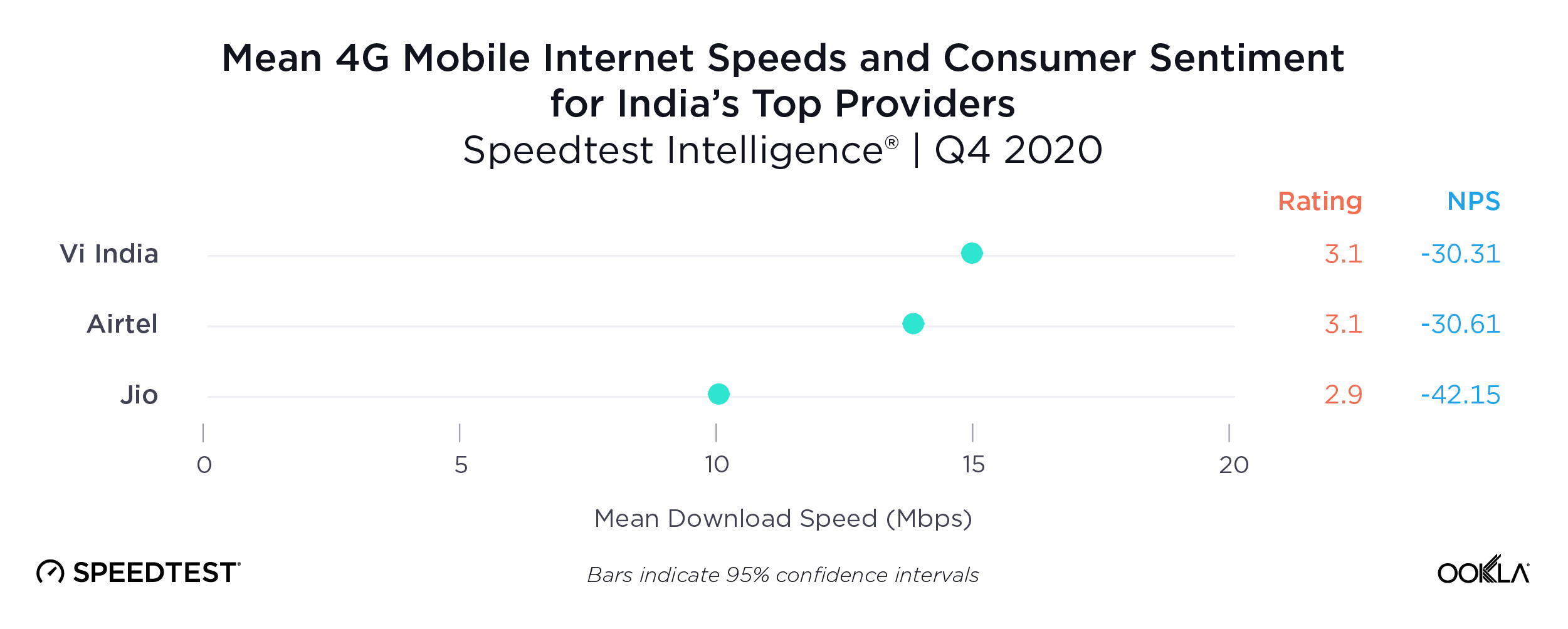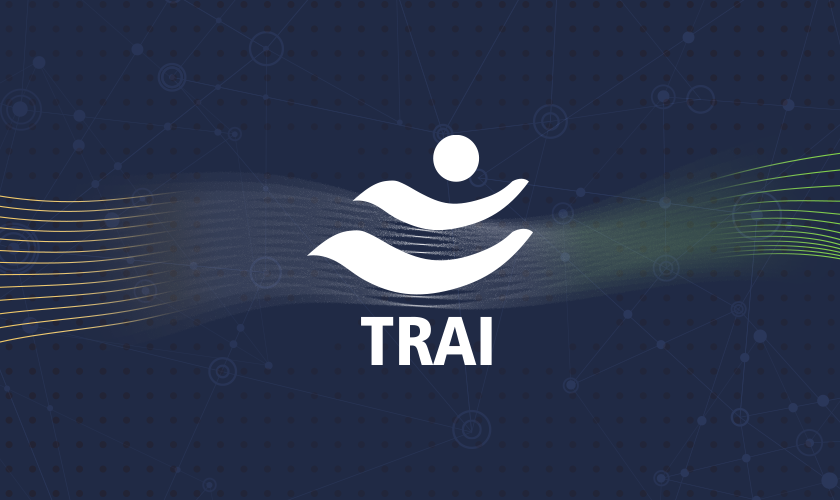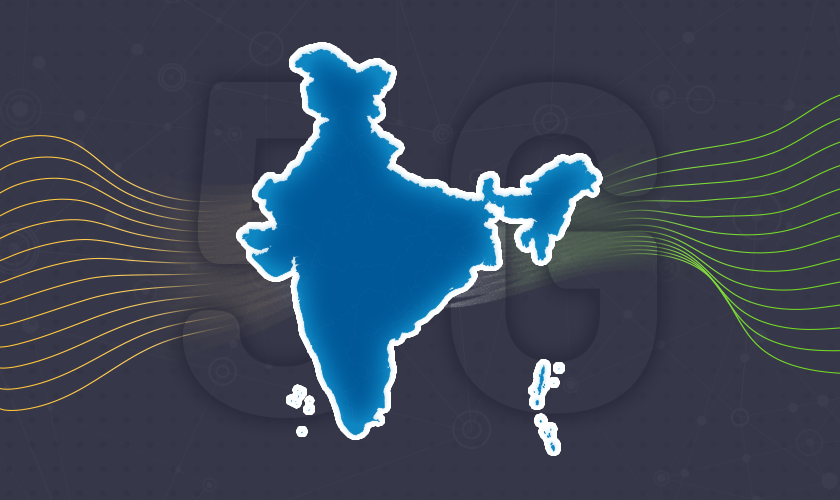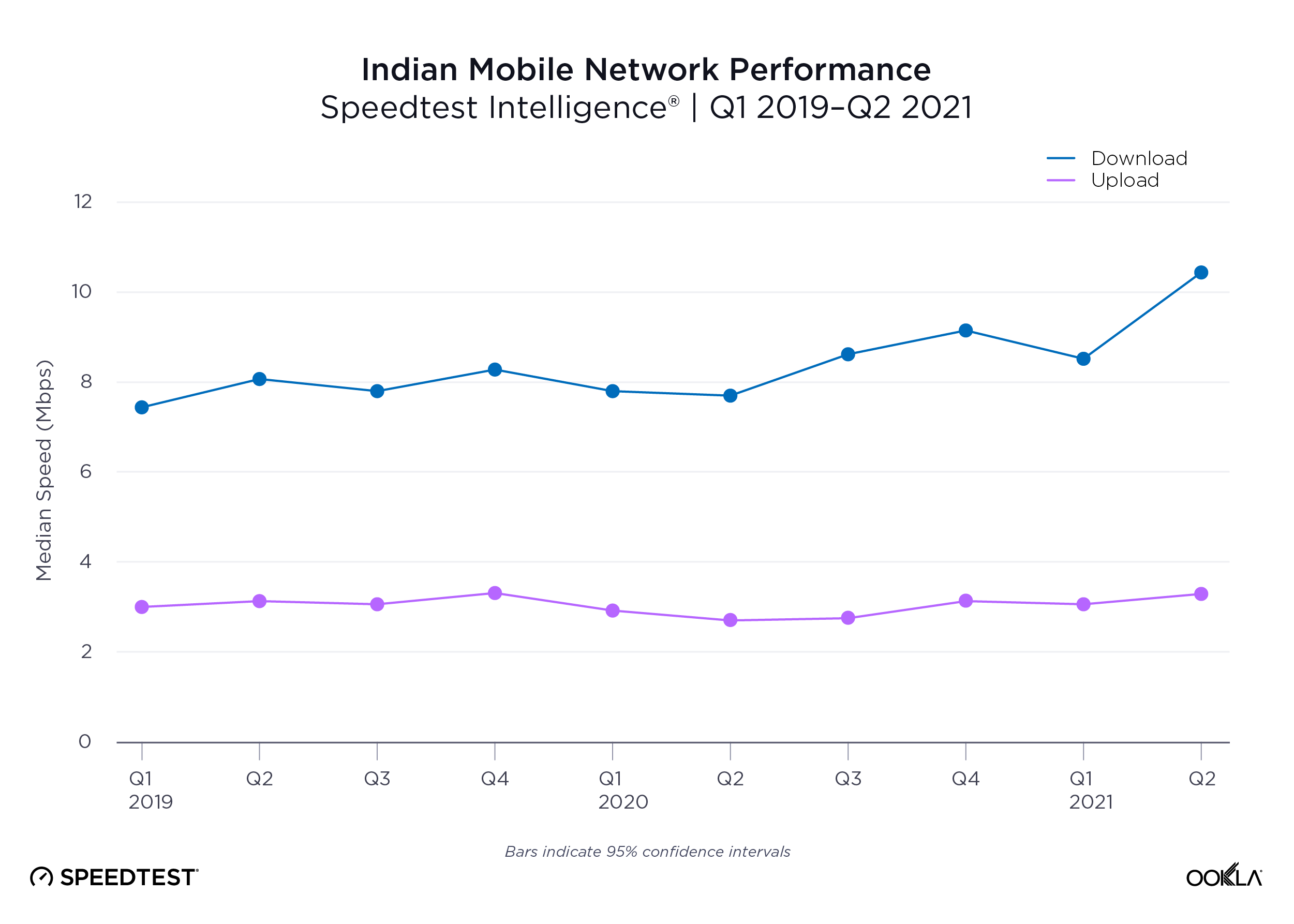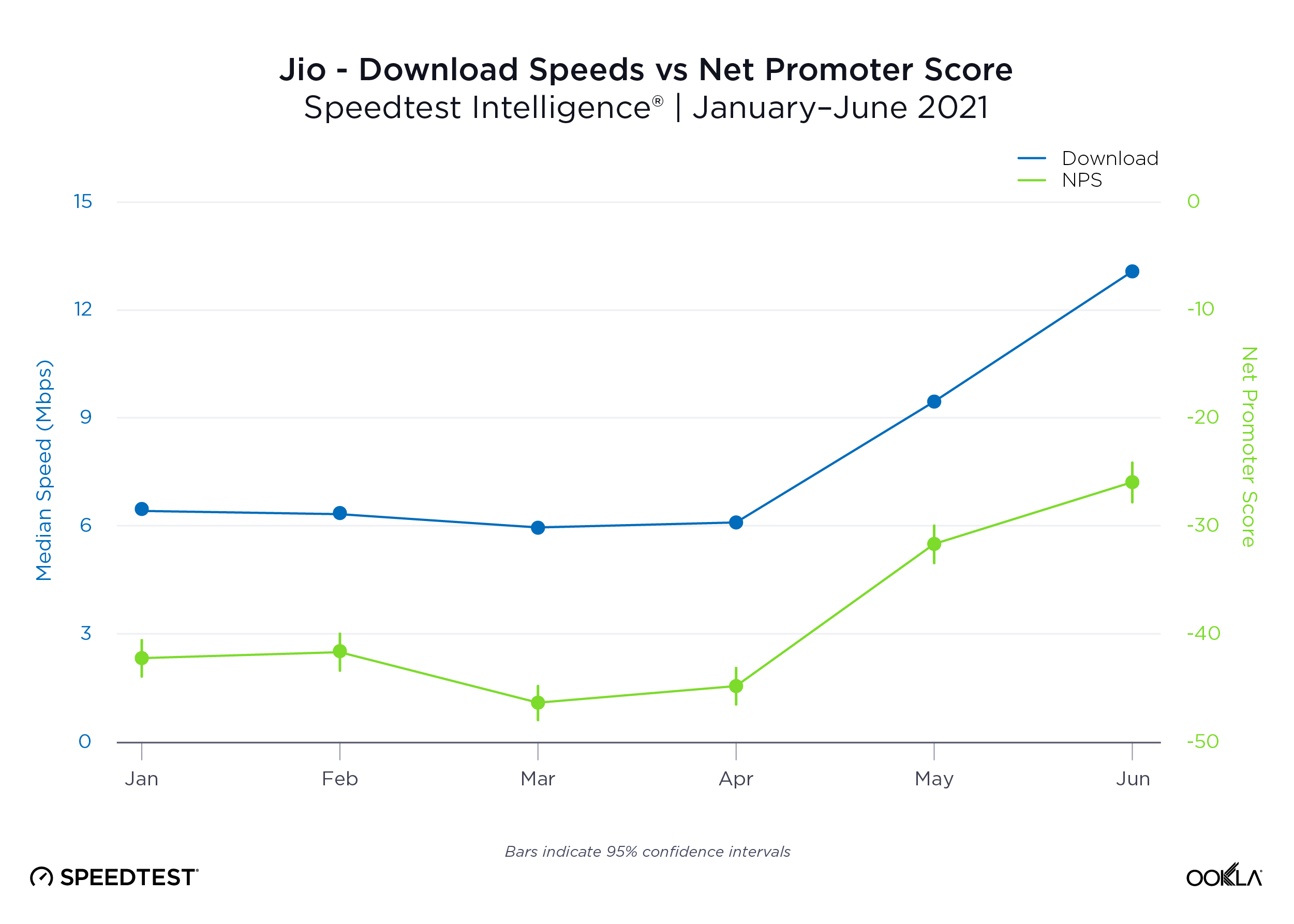To upgrade or not to upgrade, with Black Friday and Cyber Monday deals on the latest iPhone and Samsung devices on the horizon you may be asking yourself just that question. We analyzed data from Speedtest Intelligence® in 13 major markets to see how well the Apple iPhone 15 devices and the Samsung Galaxy Z Fold5 and Flip5 models are performing in comparison to last year’s models over 5G to help you make an informed decision. For details on performance by Samsung Galaxy S23 models, read our analysis from earlier this year. We’re especially interested in seeing if technical improvements on iPhone 15 models including support for WiFi 6E drive better performance.
Data for iPhone models is provided for the period from September 22-October 20, 2023, while data for the Samsung models is for the period from August 11-October 20, 2023. Keep in mind that device data differs across markets due to a variety of factors, including: 5G investments by governments and mobile operators, different 5G spectrum allocations, and mobile 5G plans. As many of these devices are very new, the sample counts in some countries are still low so the statistical ranges of expected performance are wider for the newer devices than the older models.
Half of models surveyed worth the upgrade in Australia
In Australia, two out of four iPhone 15 models showed median 5G download speeds that were significantly faster than their iPhone 14 equivalents during the September 22-October 20, 2023 period. Speedtest Intelligence reveals the iPhone 15 Pro and the iPhone 15 Pro Max both had a 14% better download speed than their prior year counterparts. There was no statistical winner for the iPhone standard model or the iPhone Plus in Australia during this period.
The Galaxy Z Flip5 had a 30% better download speed than the Galaxy Z Flip4 during the August 11-October 20, 2023 period in Australia, while there was no statistical winner for the Galaxy Z Fold.
Recommendation: Depending on your model of choice, only half the devices surveyed merit an upgrade based on performance alone in Australia.
iPhones mostly worth the upgrade in Brazil
Three out of four iPhone 15 models in Brazil showed median 5G download speeds that were significantly faster than their iPhone 14 equivalents during the September 22-October 20, 2023 period. Speedtest Intelligence showed the iPhone 15 had a better download speed than the iPhone 14, with the iPhone 15 Pro Max having a 8% better download speed than the iPhone 14 Pro Max, and the iPhone 15 Pro showing a 1% better download speed than the iPhone 14 Pro. There was no statistical winner for the iPhone Plus in Brazil during this period.
There was no statistical winner for 5G median download speed during the August 11-October 20, 2023 period for the Galaxy Z Flip or the Galaxy Z Fold in Brazil.
Recommendation: iPhone users in Brazil should consider an upgrade based on performance, while Samsung Galaxy fans only need to upgrade if they are looking for feature improvements.
All iPhones show improvement over prior models in Canada
All four iPhone 15 models in Canada showed median 5G download speeds that were significantly faster than their iPhone 14 equivalents during the September 22-October 20, 2023 period. Data from Speedtest Intelligence demonstrated the iPhone 15 had a better download speed than the iPhone 14, with the iPhone 15 Pro Max having a 26% better download speed than the iPhone 14 Pro Max, the iPhone 15 Pro Plus showed a 12% better download speed than the iPhone 14 Pro Plus, and the iPhone 15 Pro had an 8% better download speed than the iPhone 14 Pro.
The Galaxy Z Fold5 had a better download speed than the Galaxy Z Fold4 during the August 11-October 20, 2023 period in Canada, while there was no statistical winner for the Galaxy Z Flip.
Recommendation: iPhone users in Canada should consider an upgrade based on performance, while Samsung Galaxy fans should make a decision based on which model they’re considering.
Three iPhone models show decent improvement over prior versions in France
Three out of four iPhone 15 models in France showed median 5G download speeds that were significantly faster than their iPhone 14 equivalents during the September 22-October 20, 2023 period. Speedtest Intelligence reveals the iPhone 15 and the iPhone 15 Pro Max both had 18% better download speeds than their respective prior year models. The iPhone 15 Pro had a 5% better download speed than the iPhone 14 Pro. There was no statistical winner for the iPhone Plus in France during this period.
There was no statistical winner for 5G median download speed during the August 11-October 20, 2023 period for the Galaxy Z Flip or the Galaxy Z Fold in France.
Recommendation: iPhone users in France should consider an upgrade based on performance, and Samsung Galaxy users only need to upgrade if they are looking for feature improvements.
Galaxy Z Fold5 shows some improvements in Germany
Two out of four iPhone 15 models showed median 5G download speeds that were significantly faster than their iPhone 14 equivalents in Germany during the September 22-October 20, 2023 period. Speedtest Intelligence reveals slight improvements with the iPhone 15 Pro Max having a 6% better download speed than the iPhone 14 Pro Max and the iPhone 15 Pro having a 2% better download speed than the iPhone 14 Pro. There was no statistical winner for the iPhone standard model or the iPhone Plus in Germany during this period.
The Galaxy Z Fold5 had a 13% better download speed than the Galaxy Z Fold4 during the August 11-October 20, 2023 period in Germany, while there was no statistical winner for the Galaxy Z Flip.
Recommendation: Apple users won’t see major performance improvements from the new models, but the Galaxy Z Fold5 is worth the upgrade on performance alone.
India sees better performance on three iPhone models
Three out of four iPhone 15 models in India showed median 5G download speeds that were significantly faster than their iPhone 14 equivalents during the September 22-October 20, 2023 period. Speedtest Intelligence showed the iPhone 15, iPhone 15 Pro, and the iPhone 15 Plus had better speeds than their respective prior models. There was no statistical winner for the iPhone Pro Max in India during this period.
There was no statistical winner for 5G median download speed during the August 11-October 20, 2023 period for the Galaxy Z Flip or the Galaxy Z Fold in India.
Recommendation: Indian iPhone users should consider an upgrade based on performance, and Samsung Galaxy users only need to upgrade if they are looking for feature improvements.
No significant performance gains on new devices in the Philippines
Neither the iPhone 15 Pro nor the iPhone 15 Pro Max had a statistically better median download speed over 5G than their prior year models during the September 22-October 20, 2023 period in the Philippines. There were not enough samples to properly assess the performance of the other two iPhone models.
Likewise, there was no statistical winner for 5G median download speed during the August 11-October 20, 2023 period for the Galaxy Z Flip or the Galaxy Z Fold in the Philippines.
Recommendation: Filipino consumers looking to upgrade their phones to the latest models will have to look for reasons beyond performance.
Galaxy Z Fold5 sees performance improvement in South Korea
Mobile speeds in South Korea are already fast with a top 10 performance on the Speedtest Global Index™ as of September 2023. New phones may not push performance boosts, though, as Speedtest Intelligence data did not show significant increases in median download speed over 5G for the iPhone 15 Pro or the iPhone 15 Pro Max in South Korea during the September 22-October 20, 2023 period. However, the iPhone 15 Pro Max had a 16% better upload speed than the iPhone 14 Pro Max. There were not enough samples to properly assess the performance of the other two iPhone models.
On the other hand, the Galaxy Z Fold5 had a 10% better download speed than the Galaxy Z Fold4 during the August 11-October 20, 2023 period in South Korea, while there was no statistical winner for the Galaxy Z Flip.
Recommendation: If South Korean consumers are looking for better performance, upgrading from the Galaxy Z Fold4 to the Galaxy Z Fold5 is worth looking into.
Spain sees major increases in iPhone speed
Three iPhone 15 models in Spain showed median 5G download speeds that were significantly faster than their iPhone 14 equivalents during the September 22-October 20, 2023 period, and the improvements in performance were mostly greater than we saw in other countries, with the exception of the United States. Speedtest Intelligence reveals the iPhone 15 Pro had a 40% better download speed than the iPhone 14 Pro, the iPhone 15 Pro Max had a 36% better download speed than the iPhone 14 Pro Max, and the iPhone 15 had an 11% better download speed than the iPhone 14. There were not enough samples to properly assess the performance of the iPhone Plus.
There were not enough samples to evaluate the Galaxy Z Flip or the Galaxy Z Fold during the August 11-October 20, 2023 period in Spain.
Recommendation: Spanish iPhone fans should definitely upgrade their devices while Samsung users can hold off for now.
Unbeatable performance in U.A.E. makes upgrades unnecessary
While Speedtest Intelligence data did not show significant increases in median download speed over 5G for the iPhone 15 Pro or the iPhone 15 Pro Max during the September 22-October 20, 2023 period, performance likely isn’t a concern in the United Arab Emirates, whose blisteringly fast download speeds topped the Speedtest Global Index™ in September 2023. There were not enough samples to properly assess the performance of the other two iPhone models.
Similarly, there was no statistical winner for 5G median download speed during the August 11-October 20, 2023 period for the Galaxy Z Fold in the U.A.E., and there were not enough samples to evaluate the Galaxy Z Flip.
Recommendation: Consumers in the U.A.E. should upgrade if they are looking for the new features on the new phone models, but upgrades for performance are unnecessary.
iPhone upgrades are the way to go in the U.K.
All four iPhone 15 models in the United Kingdom showed median 5G download speeds that were significantly faster than their iPhone 14 equivalents during the September 22-October 20, 2023 period. Speedtest Intelligence reveals the iPhone 15 had a 16% better download speed than the iPhone 14, the iPhone 15 Pro had a 14% better download speed than the iPhone 14 Pro, iPhone 15 Pro Max had a 10% better download speed than the iPhone 14 Pro Max, and iPhone 15 Plus has a 4% better download speed than the iPhone 14 Plus.
There was no statistical winner for 5G median download speed during the August 11-October 20, 2023 period for the Galaxy Z Flip or the Galaxy Z Fold in the U.K.
Recommendation: iPhone users in the U.K. should see performance improvements that make upgrading to the latest models worthwhile. Samsung Galaxy users only need to upgrade if they are looking for new features.
U.S. consumers see some of the highest improvements when upgrading to new iPhone models
Not only did all four iPhone 15 models in the United States show median 5G download speeds that were significantly faster than their iPhone 14 equivalents during the September 22-October 20, 2023 period, the improvements in performance were greater than we saw in most other countries, with the exception of Spain. Speedtest Intelligence showed the iPhone 15 Plus had a 54% better download speed than the iPhone 14 Plus, the iPhone 15 had a 45% better download speed than the iPhone 14, iPhone 15 Pro Max had a 27% better download speed than the iPhone 14 Pro Max, and iPhone 15 Pro has a 25% better download speed than the iPhone 14 Pro.
Samsung users also saw increased median download speeds over 5G when using the newer models during the August 11-October 20, 2023 period in the U.S. The Galaxy Z Flip5 had a 15% better download speed than the Galaxy Z Flip4, and the Galaxy Z Fold5 had a 10% better download speed than the Galaxy Z Fold4.
Recommendation: Upgrades for all this holiday season!
No performance boost on iPhone 15 Pro Max in Vietnam
The iPhone 15 Pro Max did not have a statistically better median download speed over 5G than the iPhone 14 Pro Max during the September 22-October 20, 2023 period in Vietnam. There were not enough samples to properly assess the performance of the other three iPhone models. Likewise, there were not enough samples to evaluate the Galaxy Z Flip or the Galaxy Z Fold.
Recommendation: Vietnamese consumers don’t need to upgrade to newer models on performance alone.
Ookla will continue evaluating device performance
We’re excited by the number of countries where mobile device performance increased with the new models and even more excited by the countries where performance is so fast that consumers can look to new modes of connectivity. Even if your country didn’t see the speed boosts you were hoping for, don’t hold back on upgrading if you want to treat yourself or a loved one based on any other number of reasons. Remember to download the iOS or Android Speedtest® app on any new devices to make sure your mobile operator is delivering the speeds you expect.
Ookla retains ownership of this article including all of the intellectual property rights, data, content graphs and analysis. This article may not be quoted, reproduced, distributed or published for any commercial purpose without prior consent. Members of the press and others using the findings in this article for non-commercial purposes are welcome to publicly share and link to report information with attribution to Ookla.

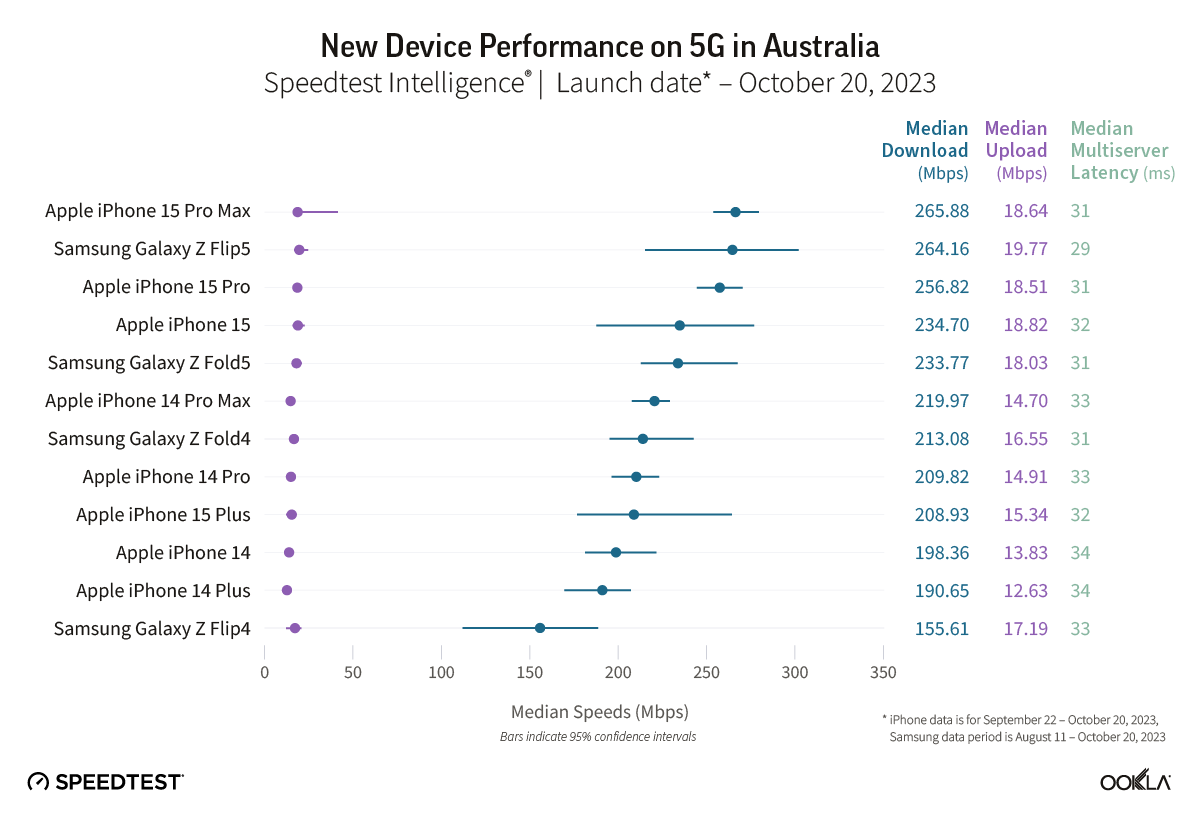
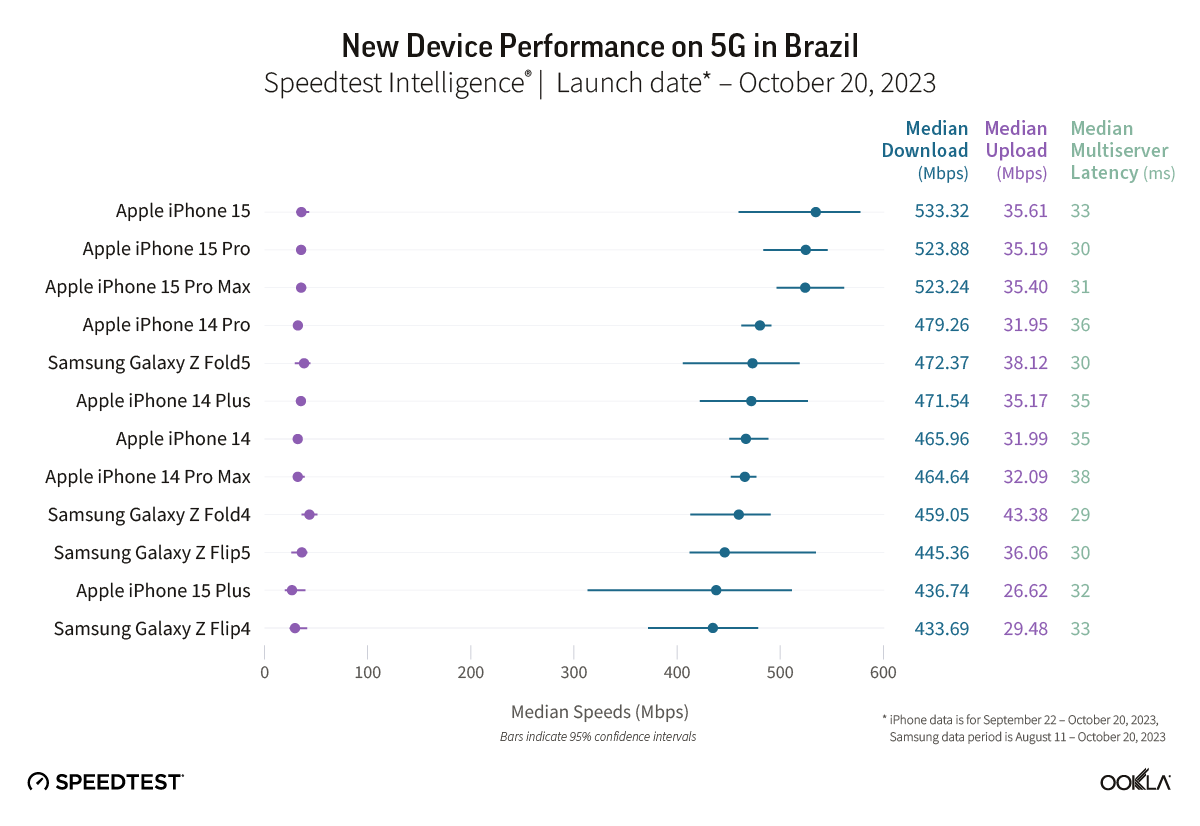
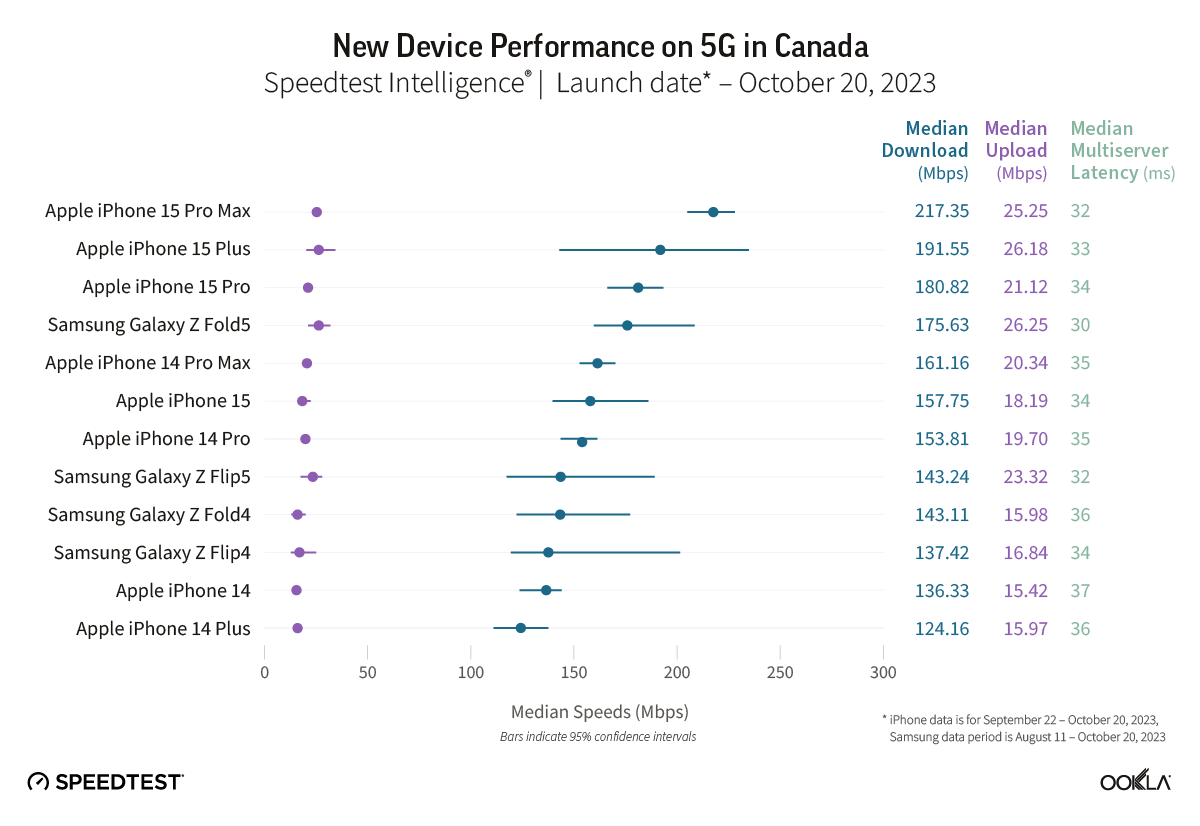
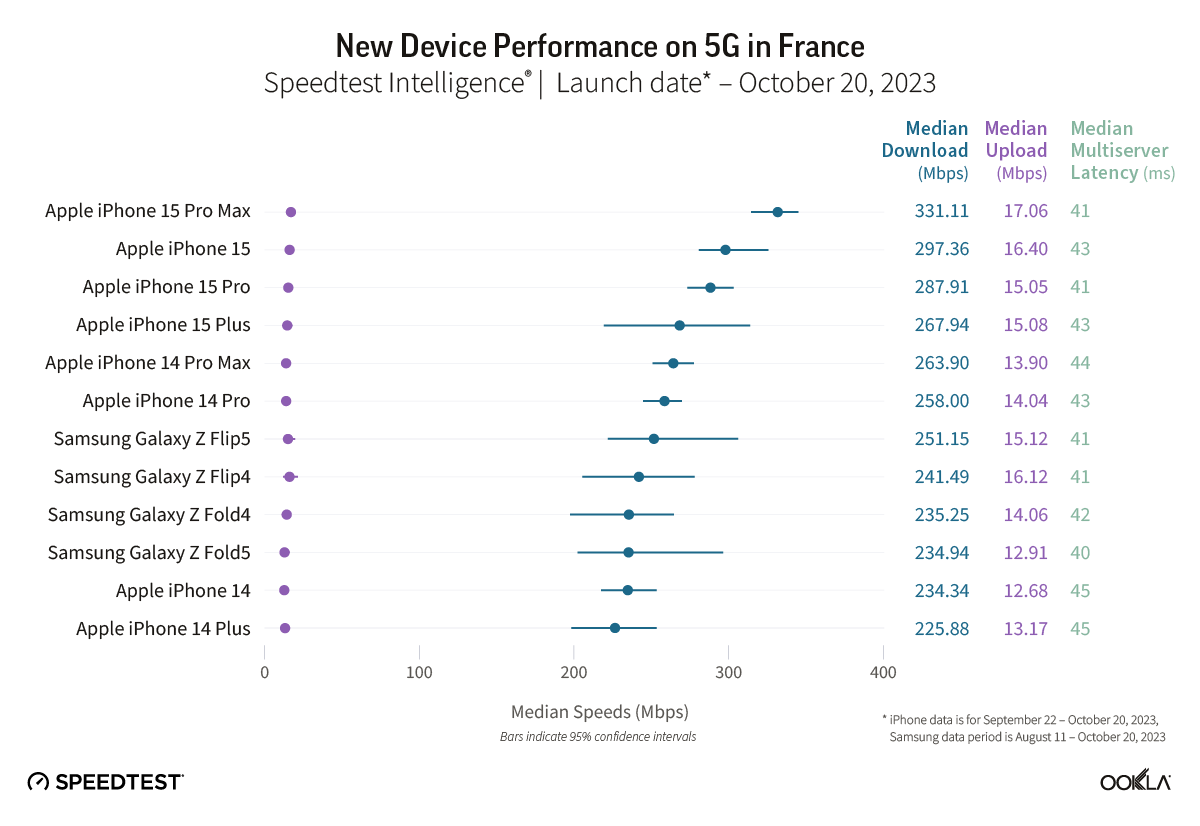

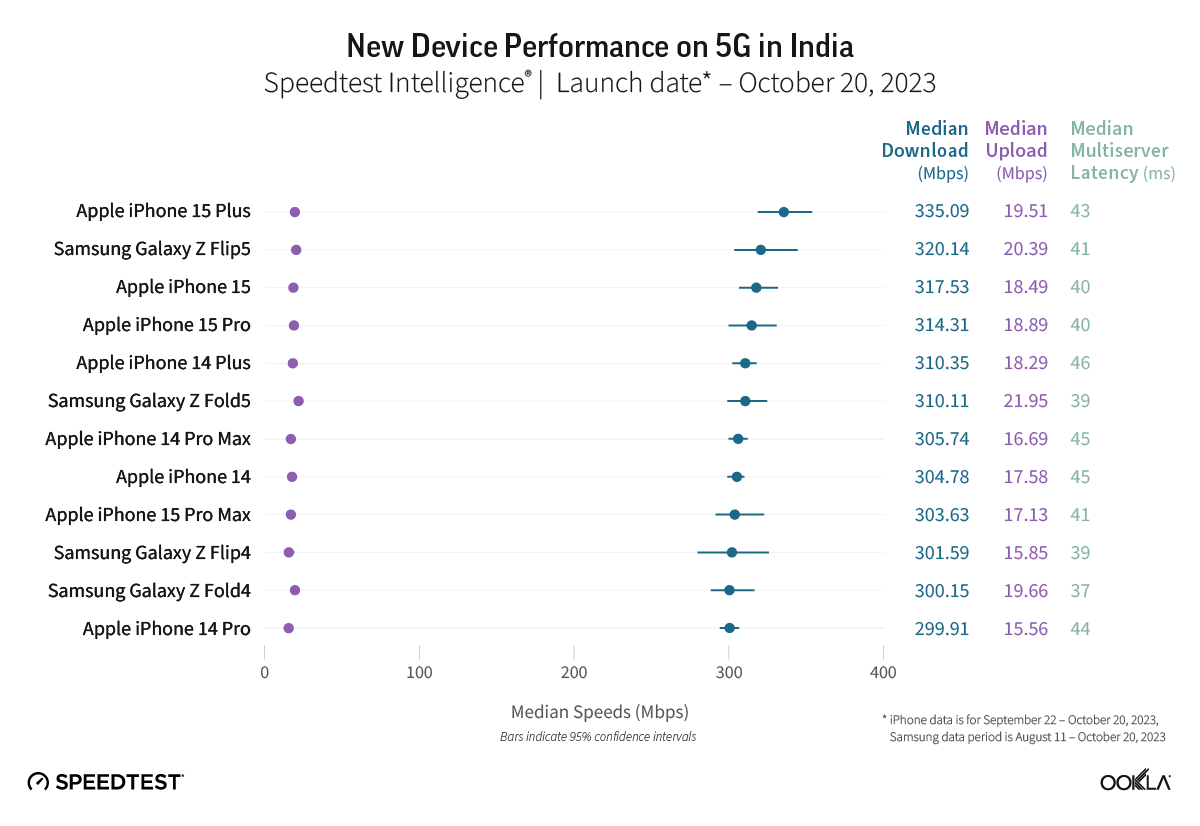
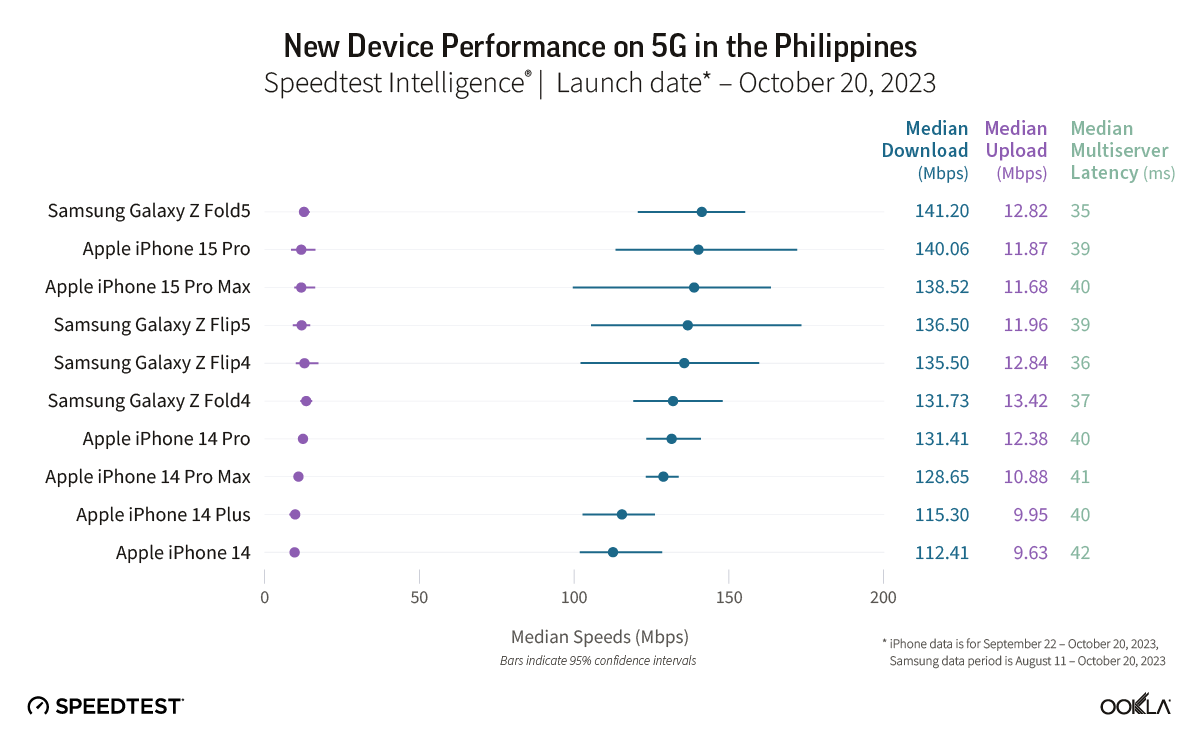
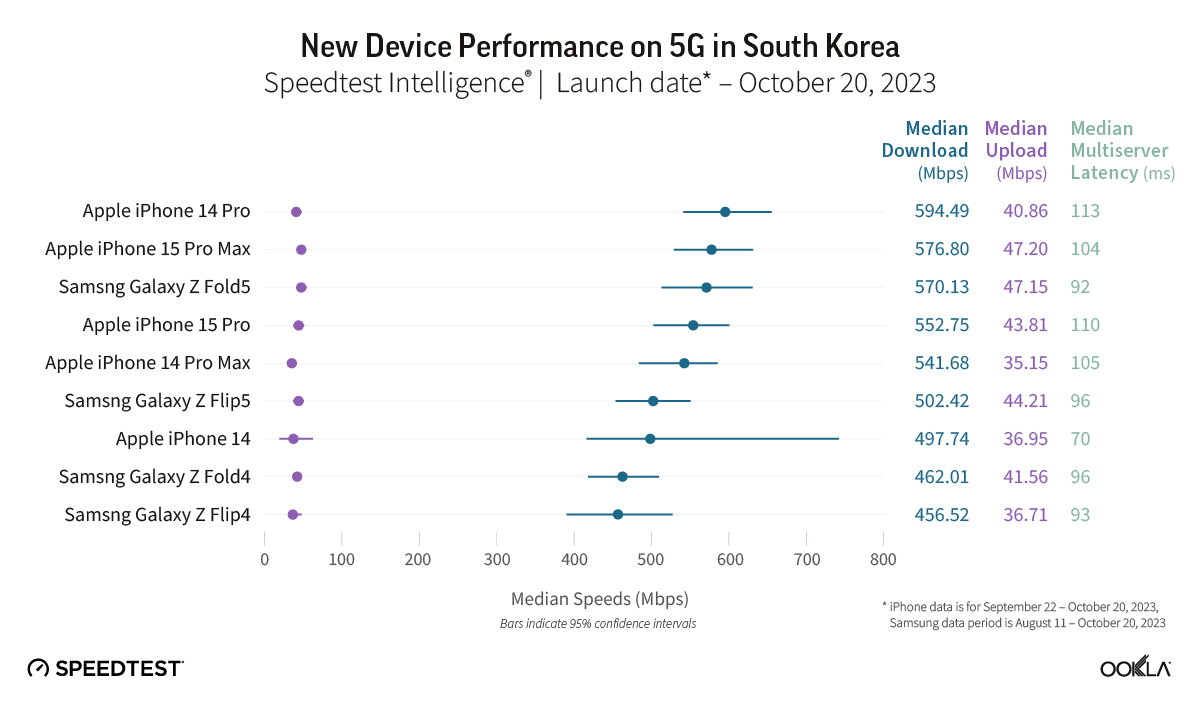
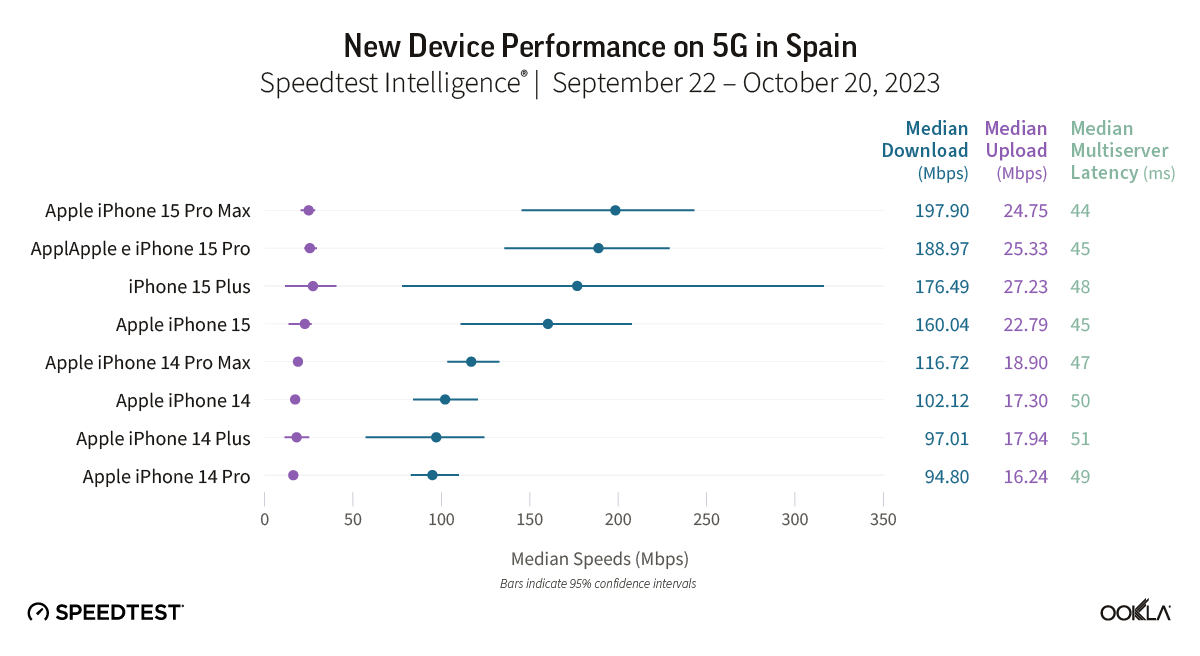
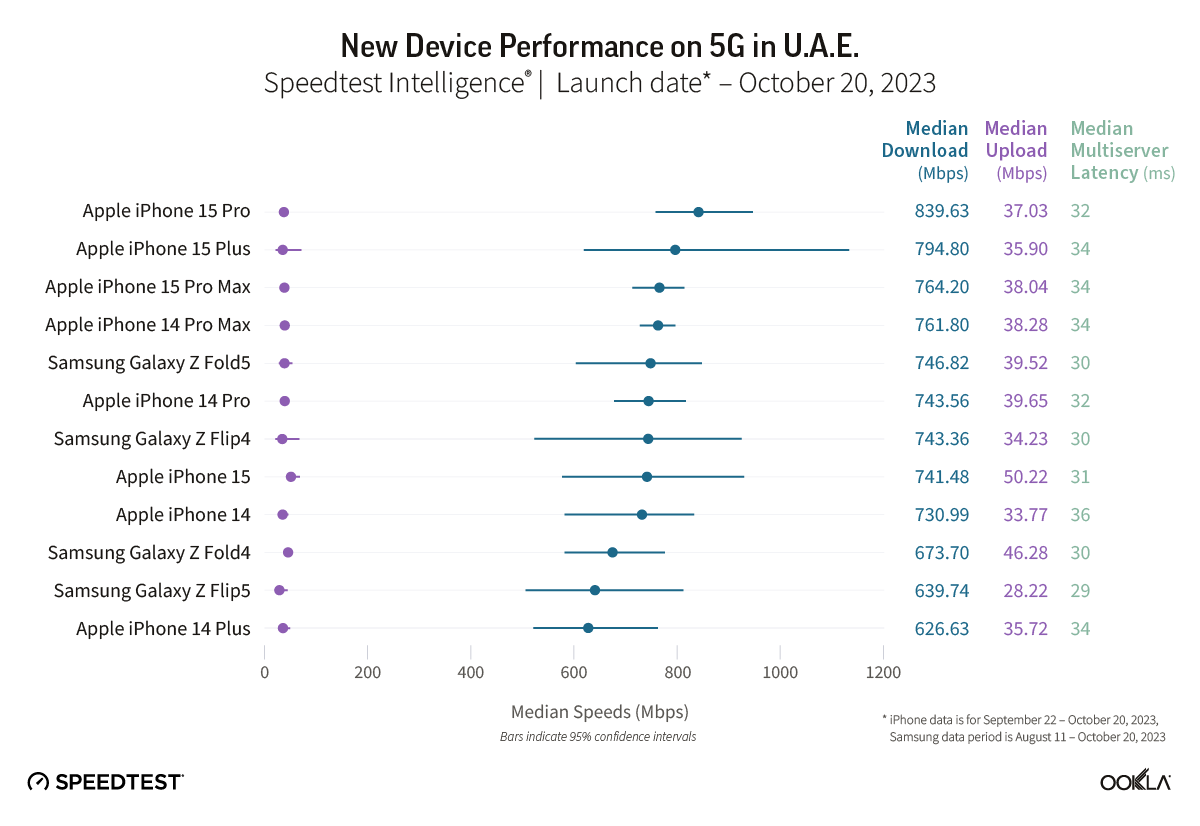
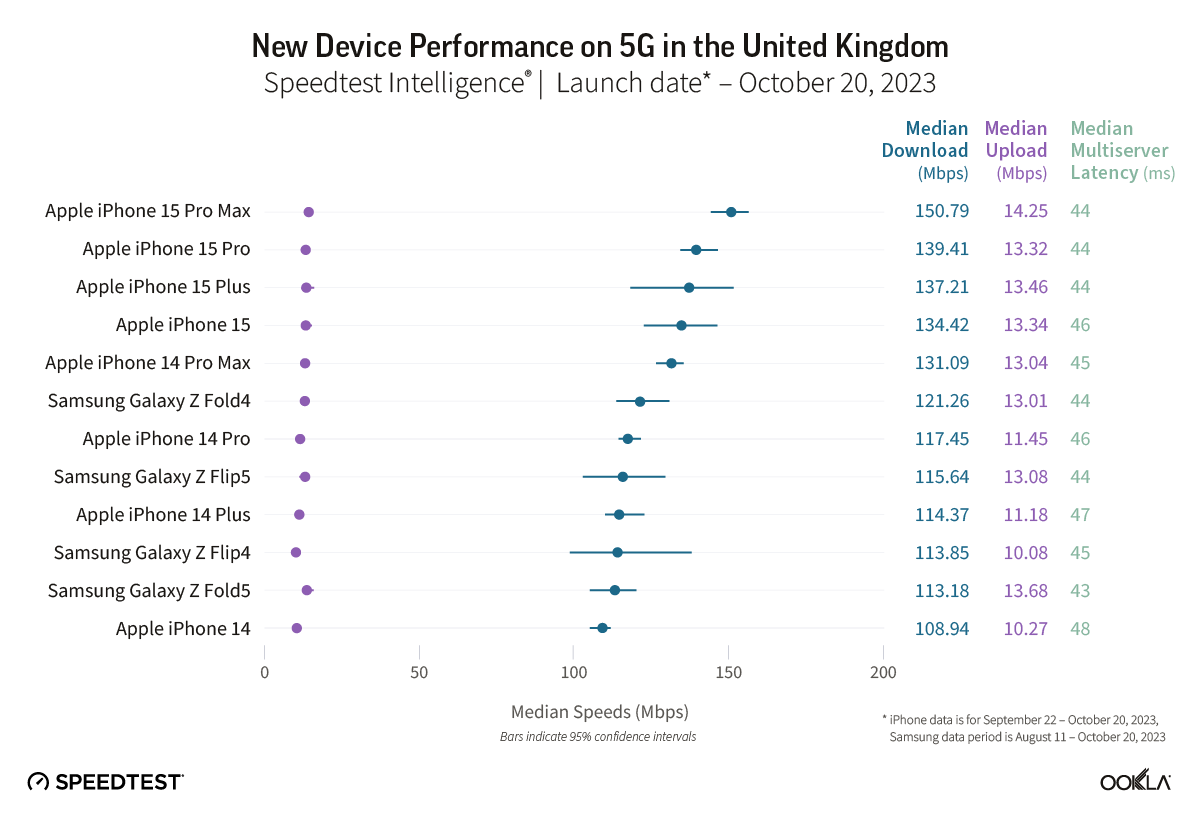
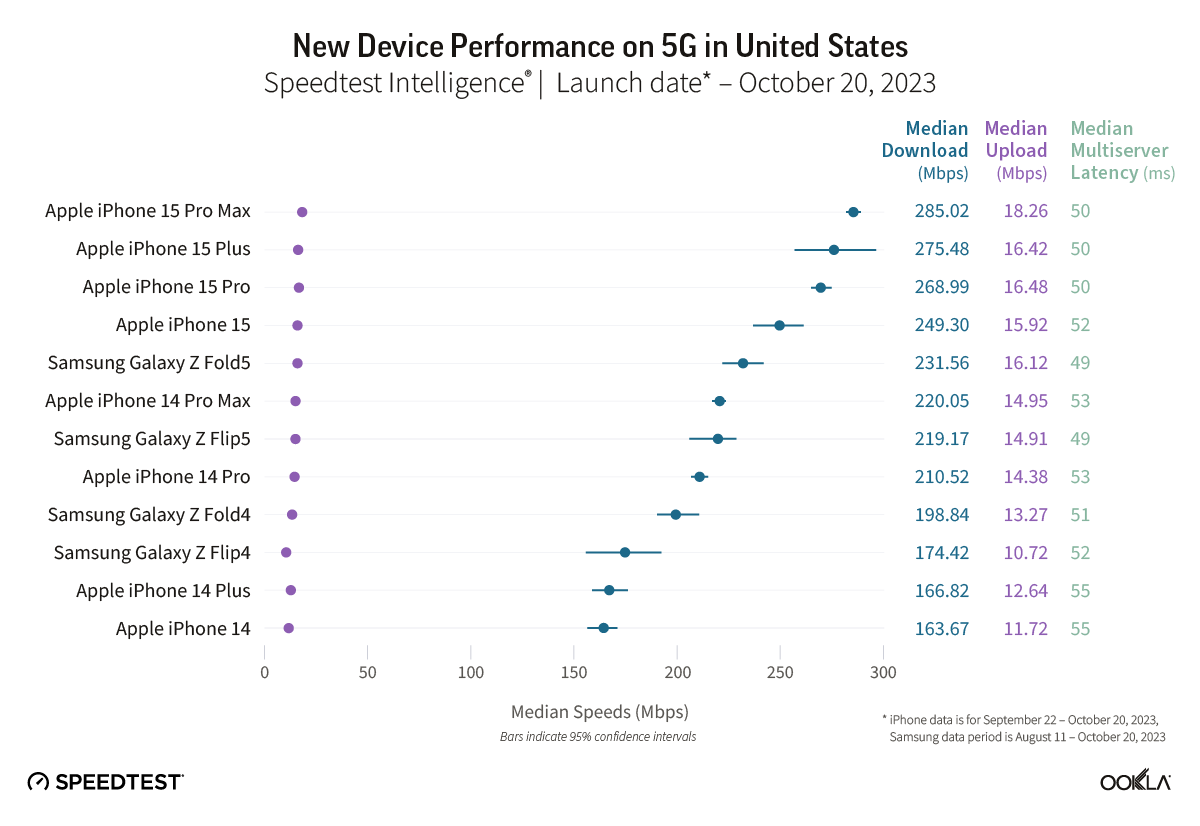
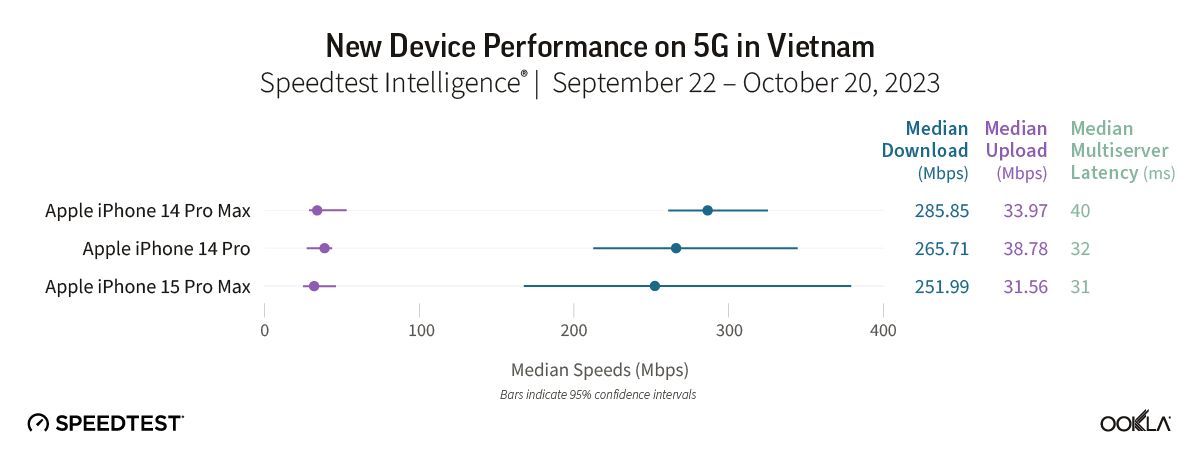

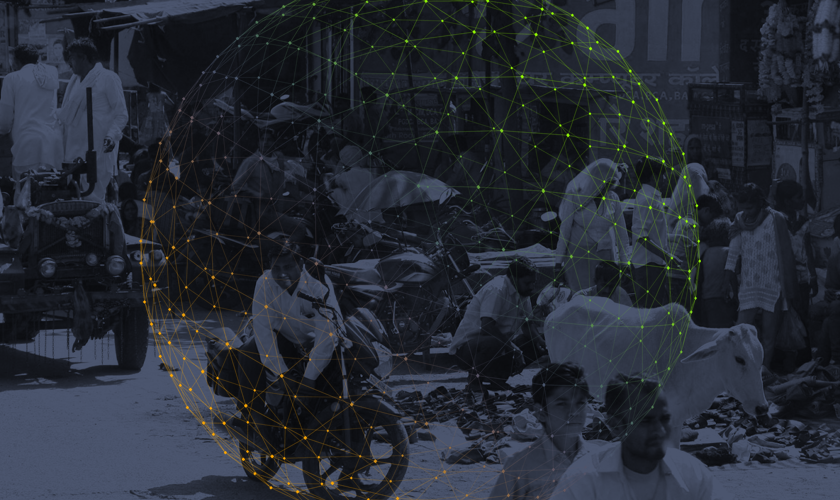
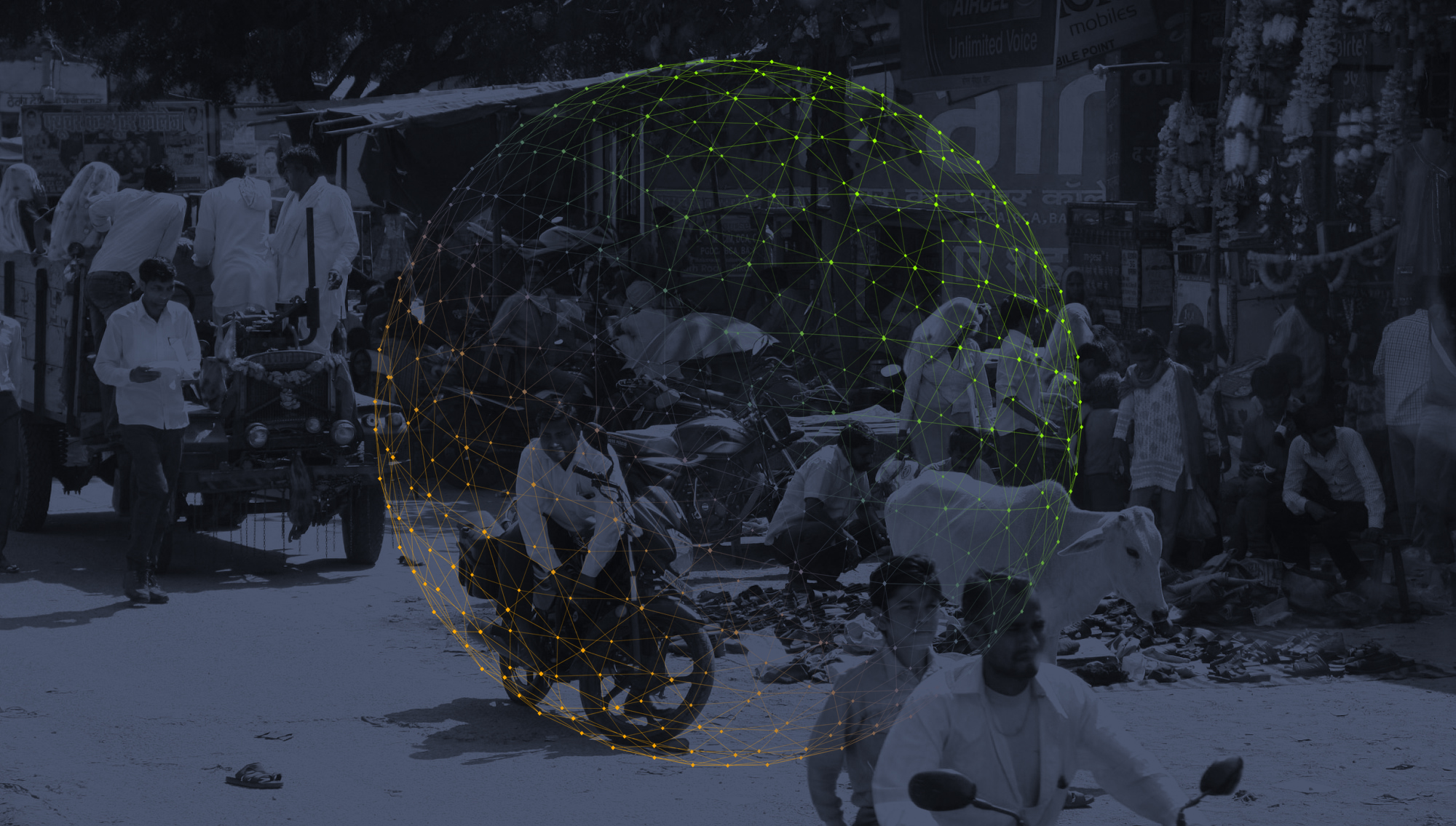
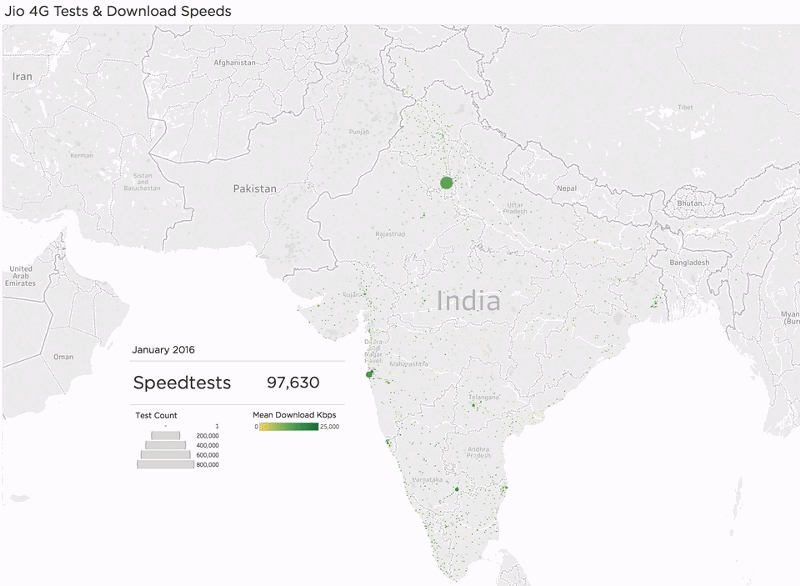
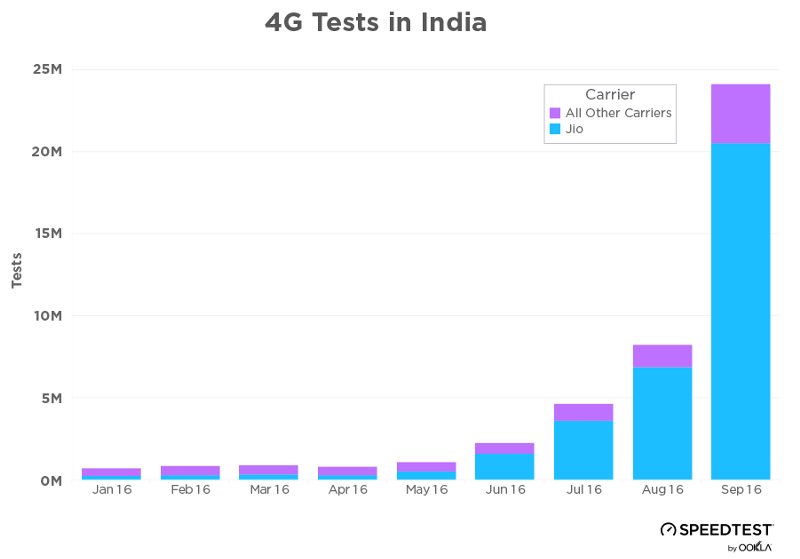
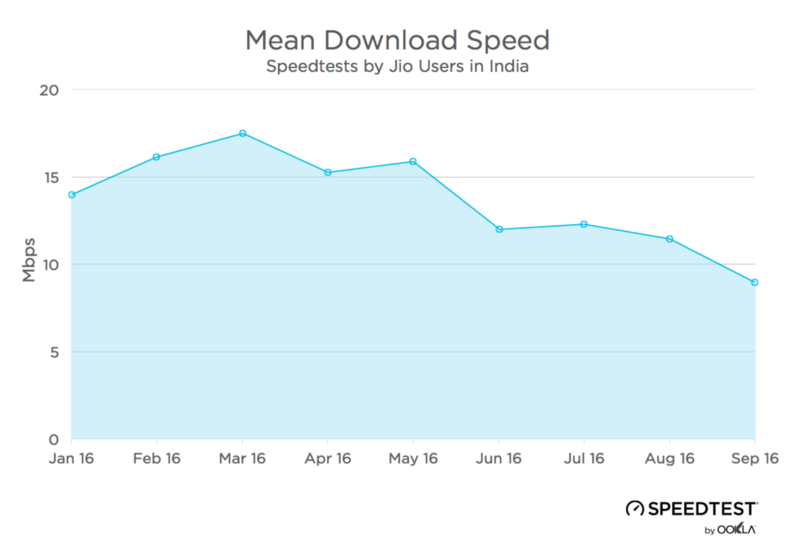
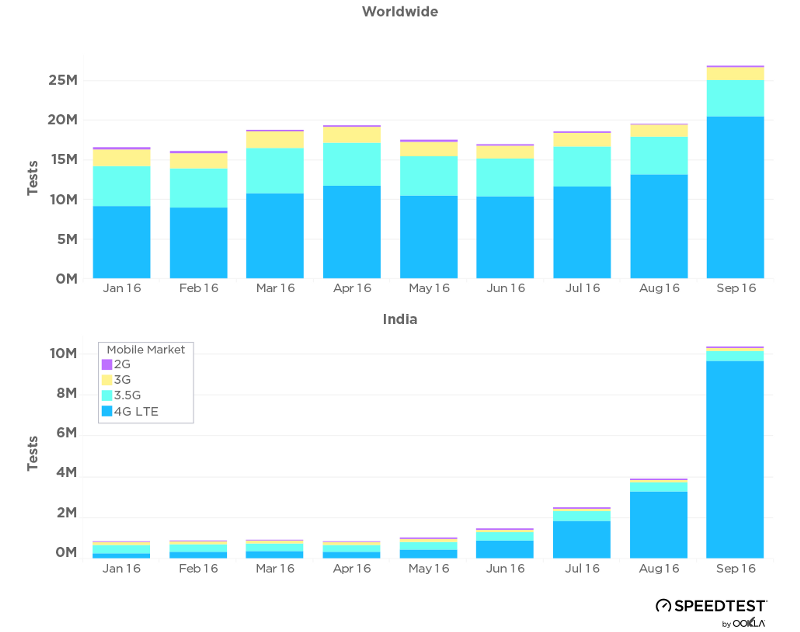


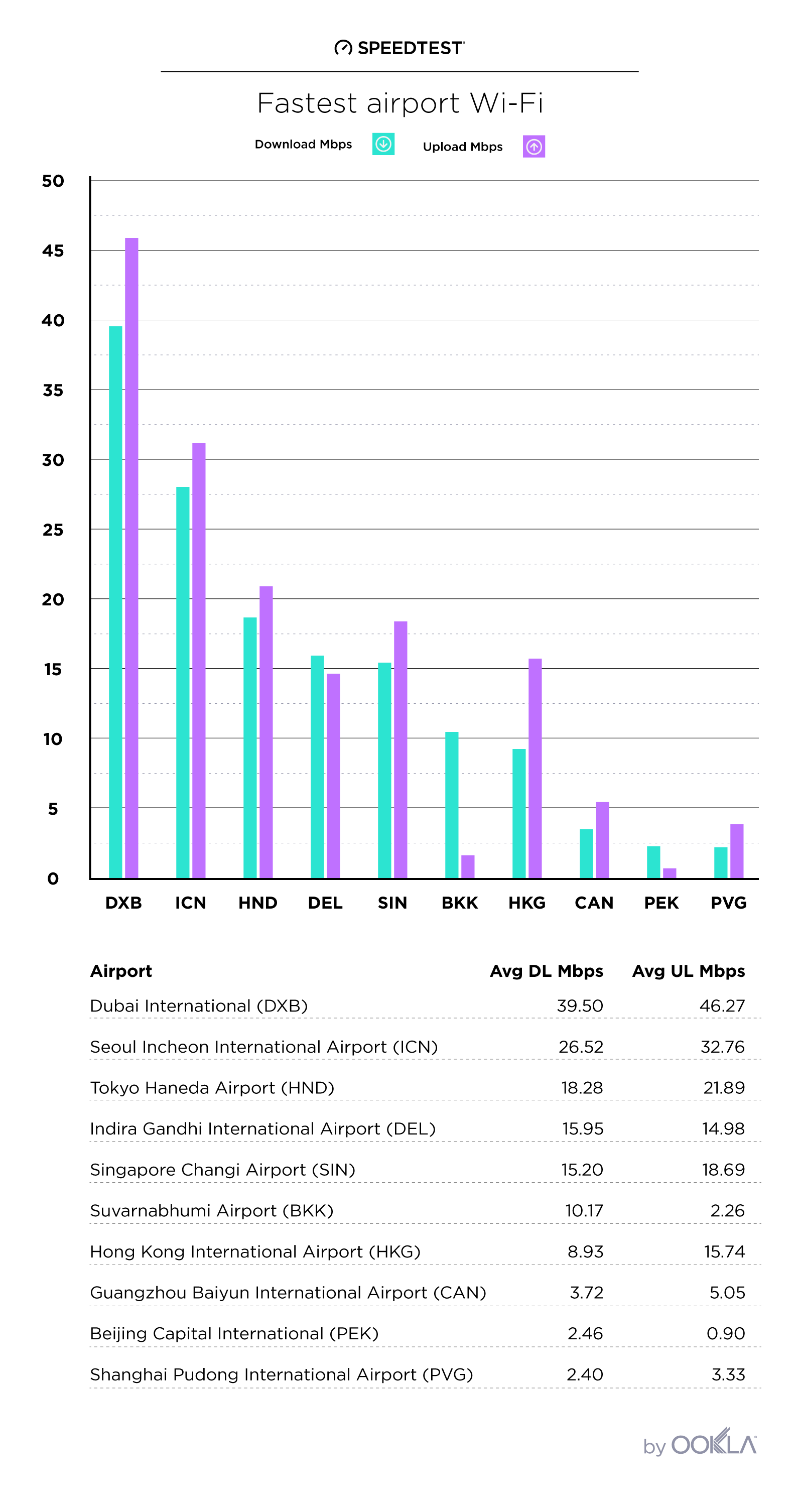
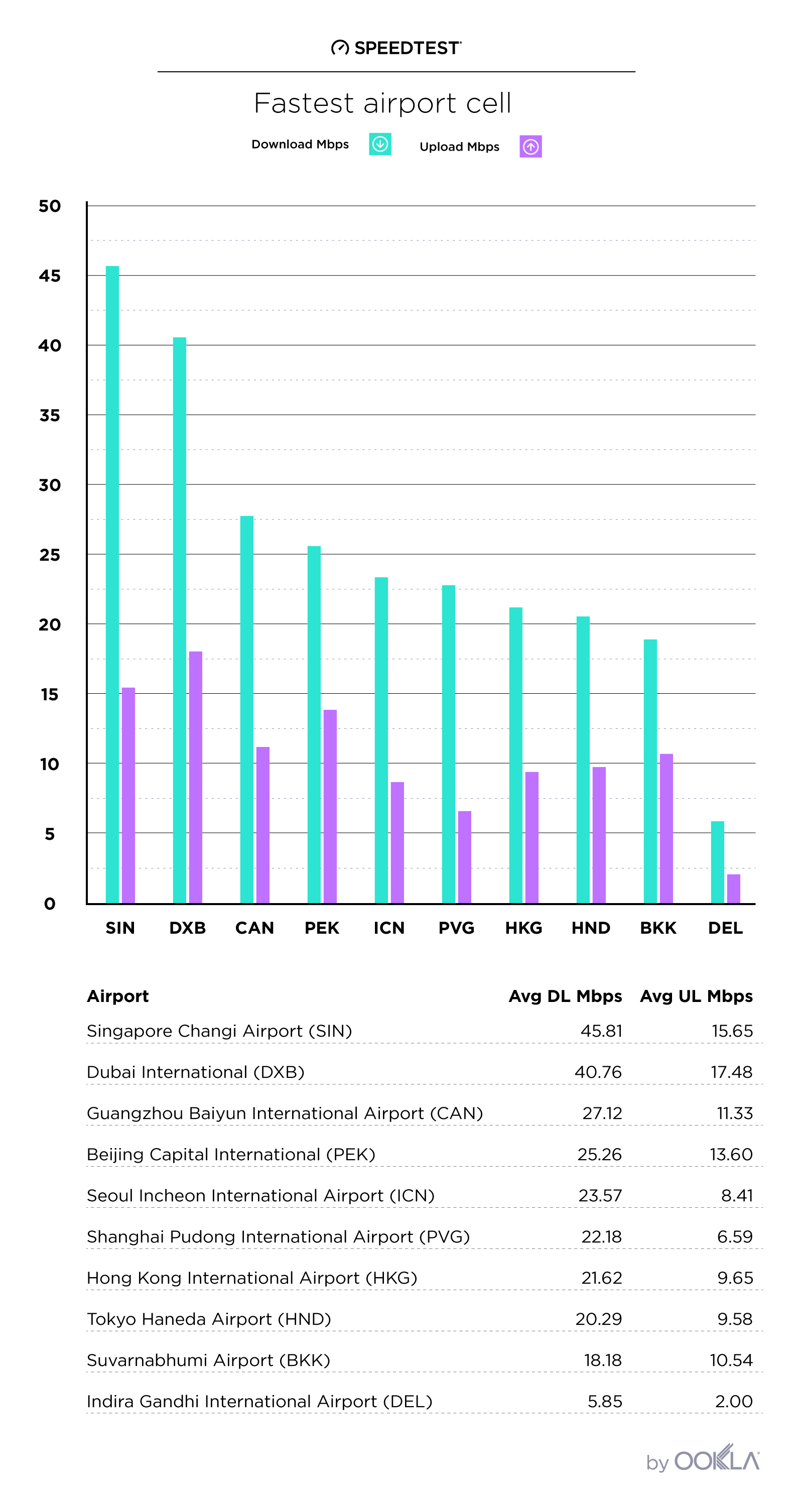
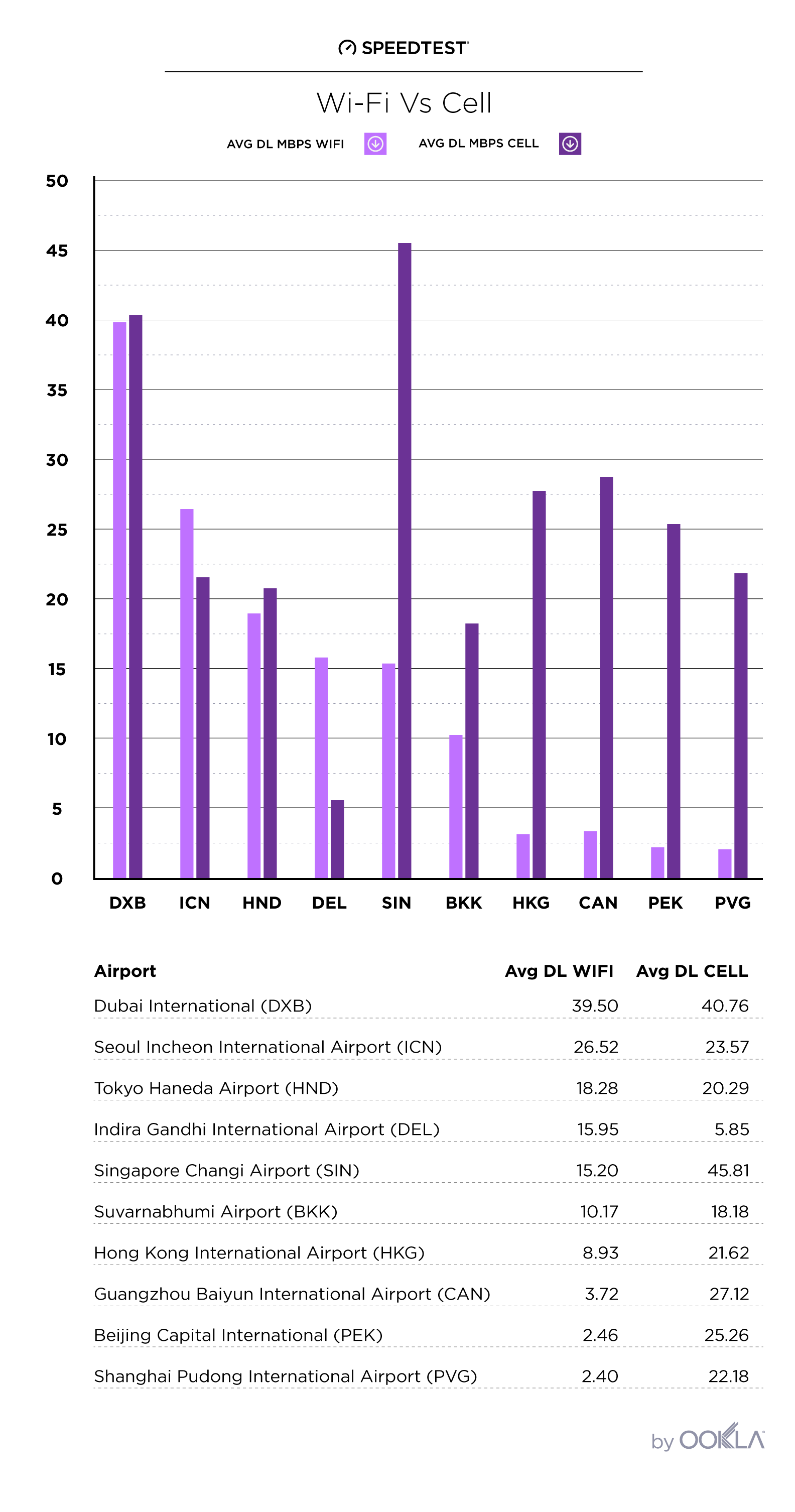

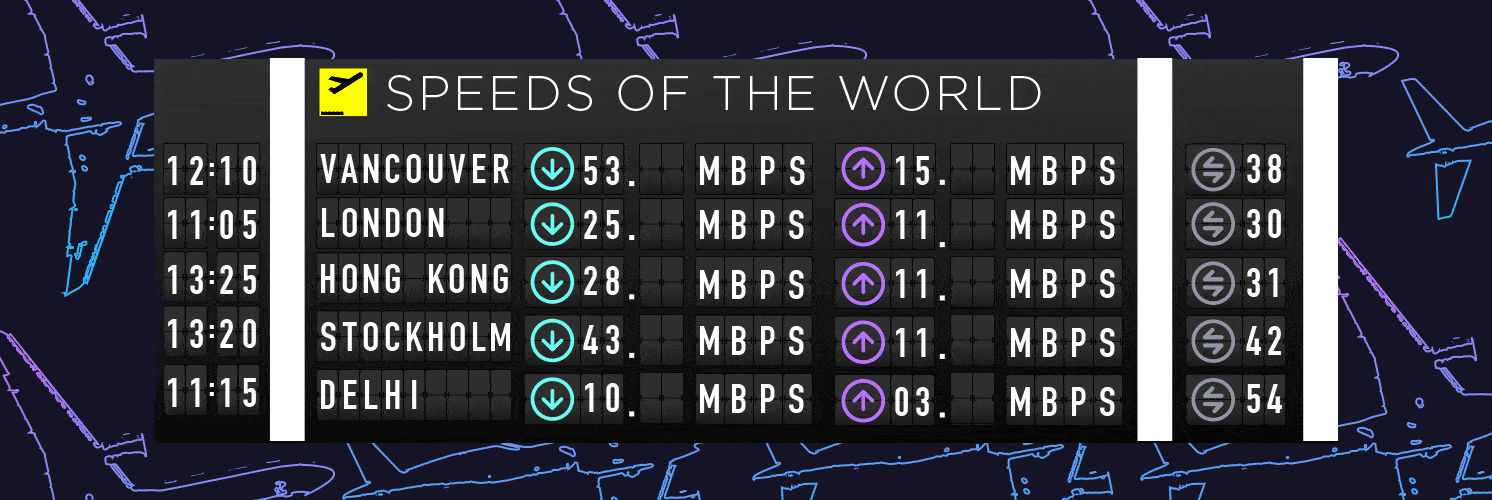


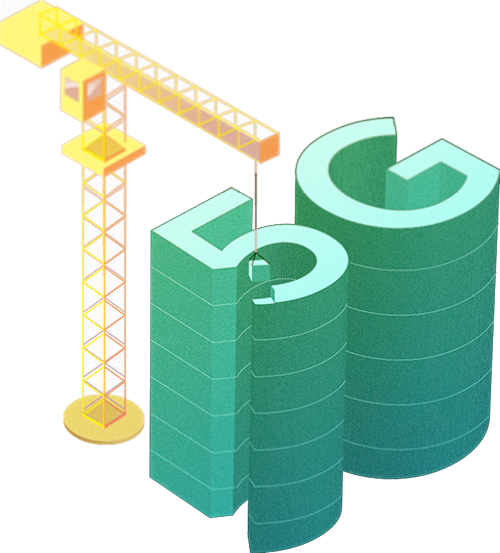 When it comes to the internet, the news is mostly good for 2018. Download and upload speeds are increasing across the globe on both mobile and fixed broadband. 5G is on the horizon and gigabit service is expanding.
When it comes to the internet, the news is mostly good for 2018. Download and upload speeds are increasing across the globe on both mobile and fixed broadband. 5G is on the horizon and gigabit service is expanding.